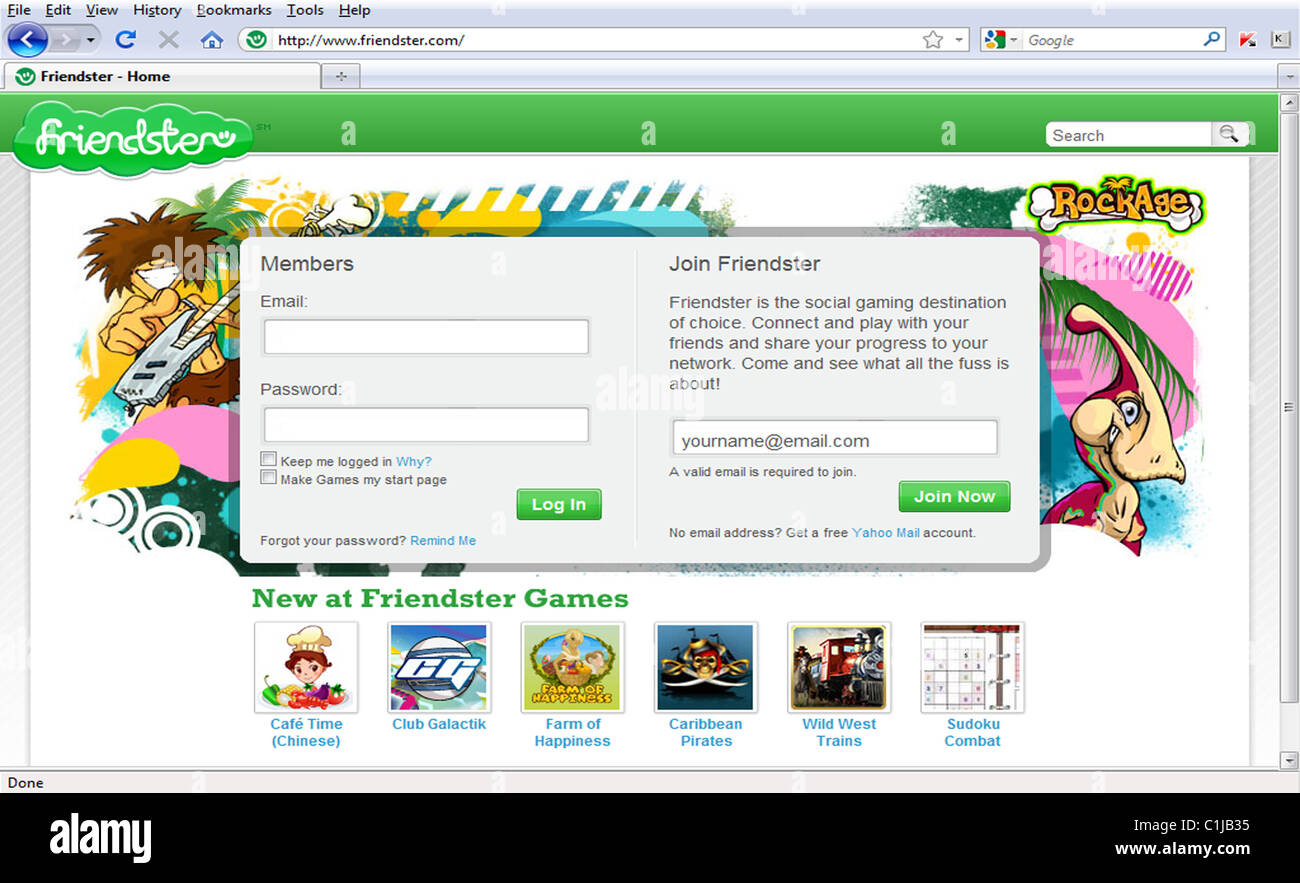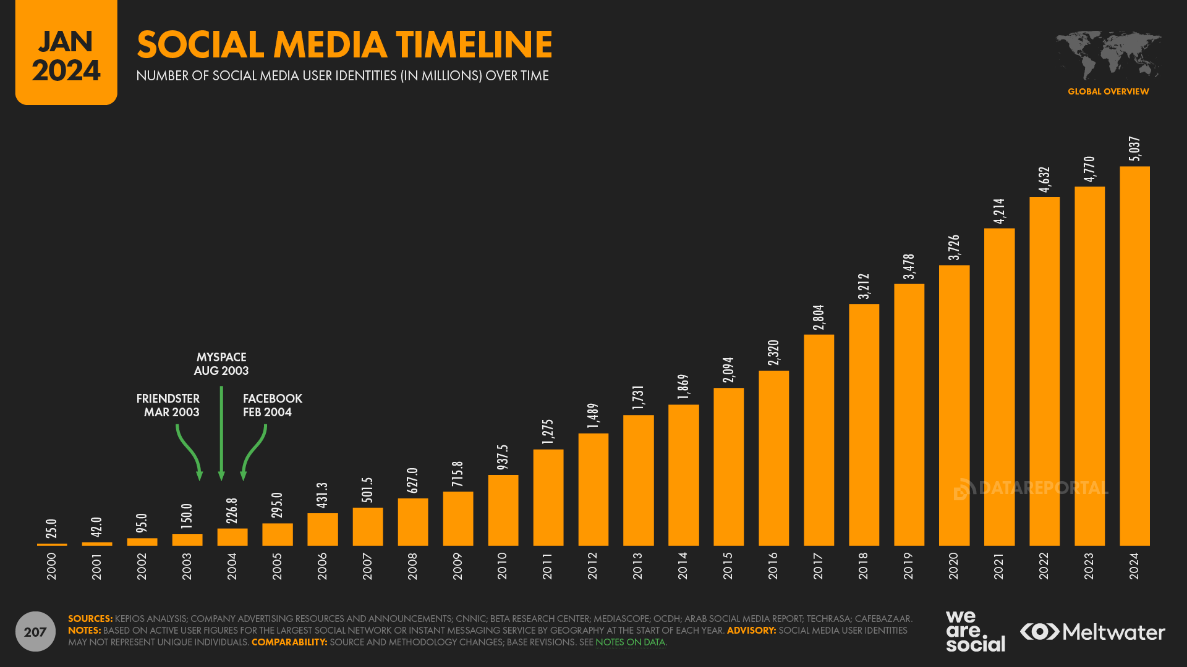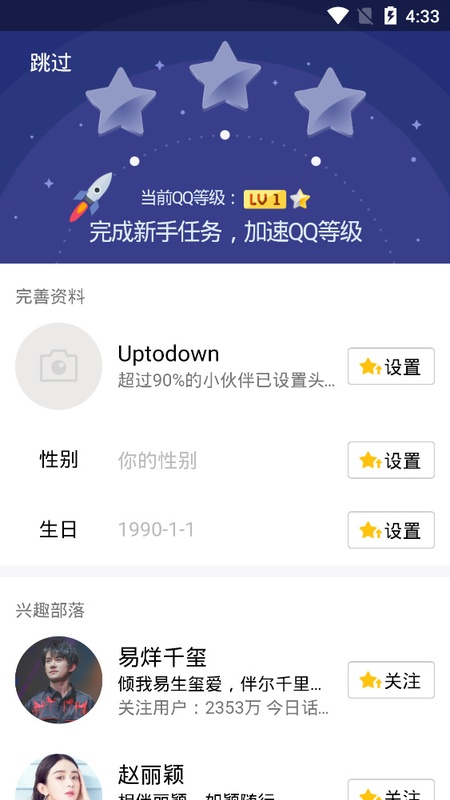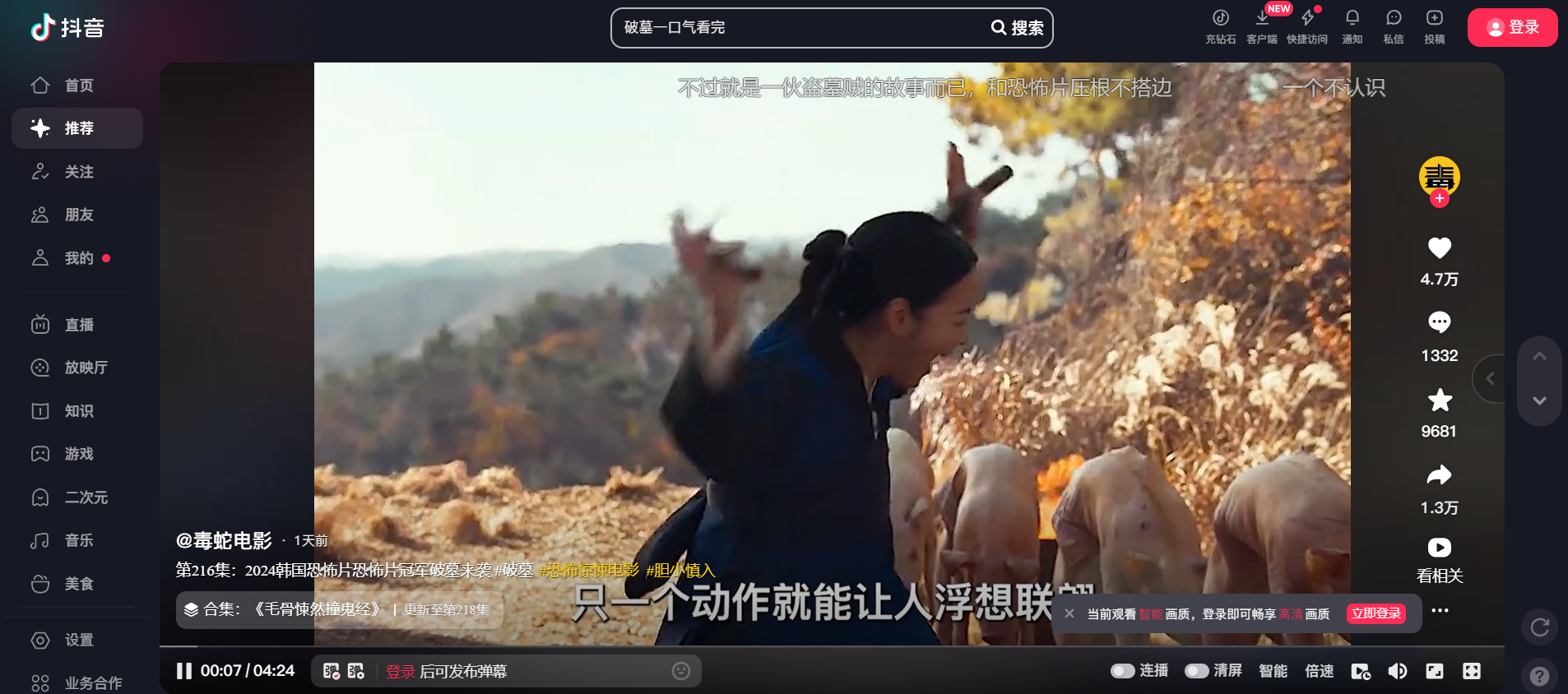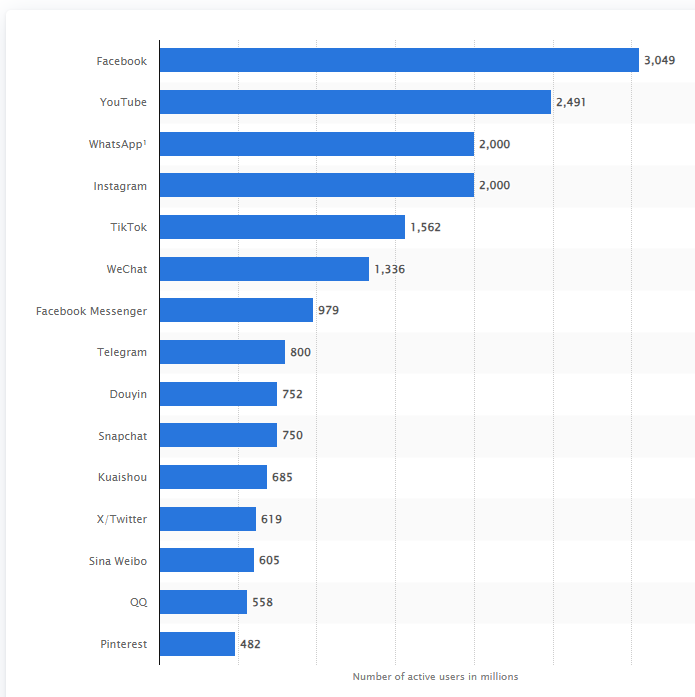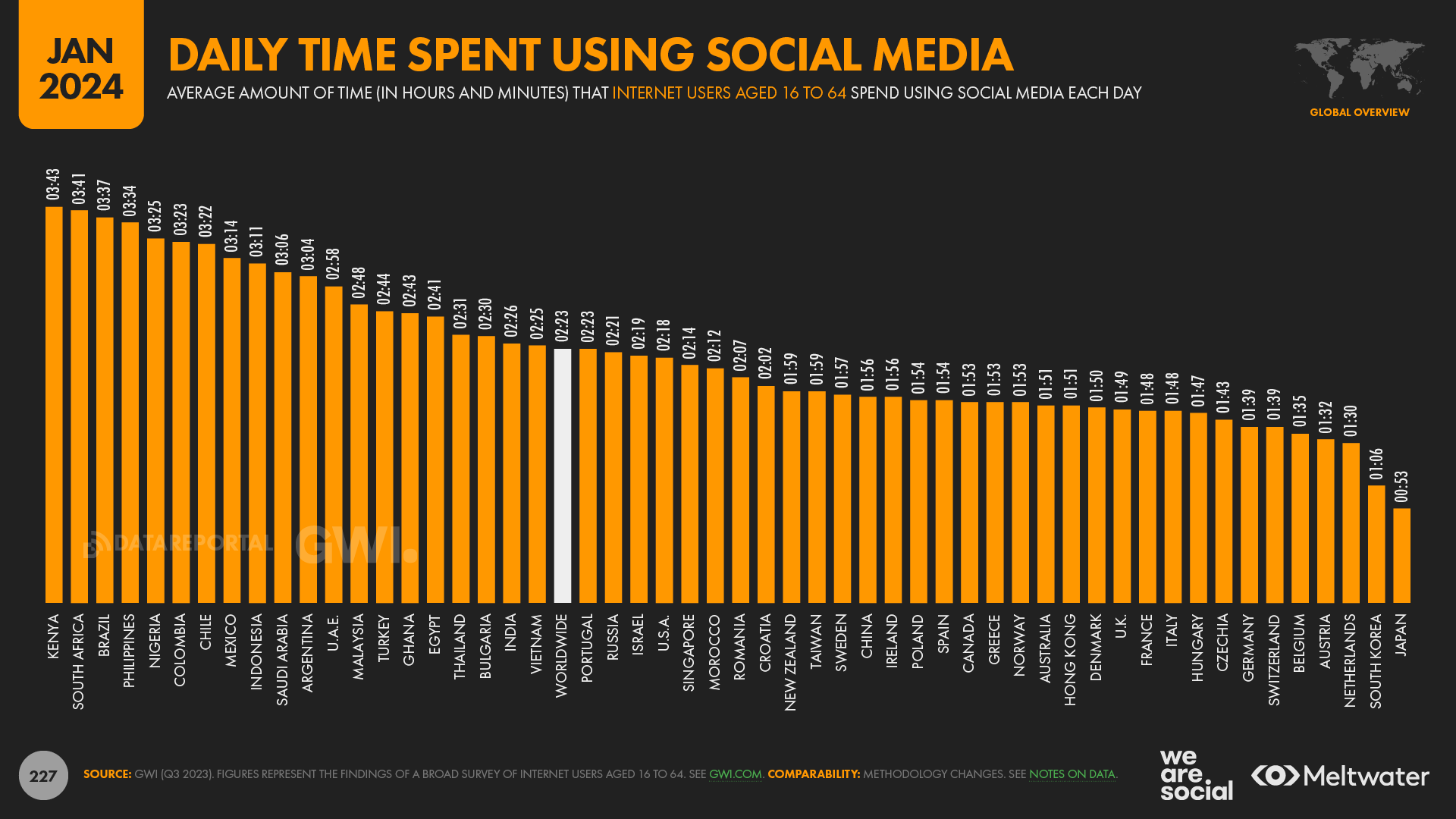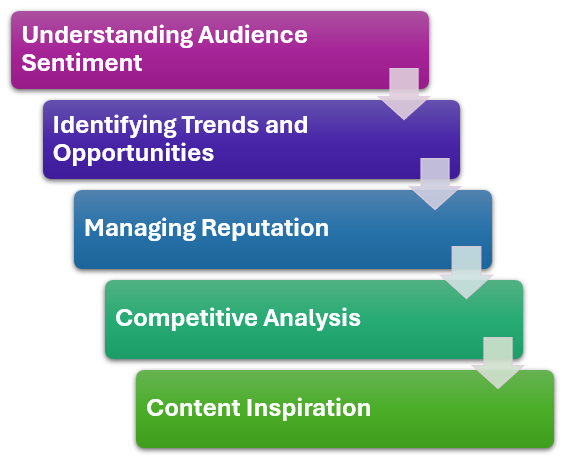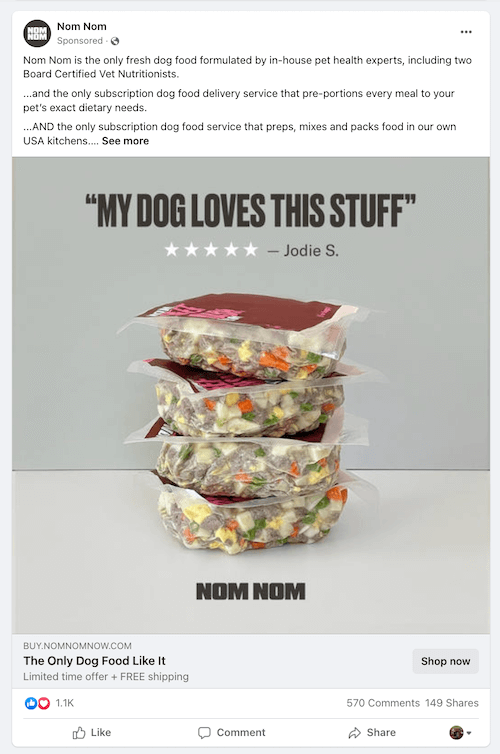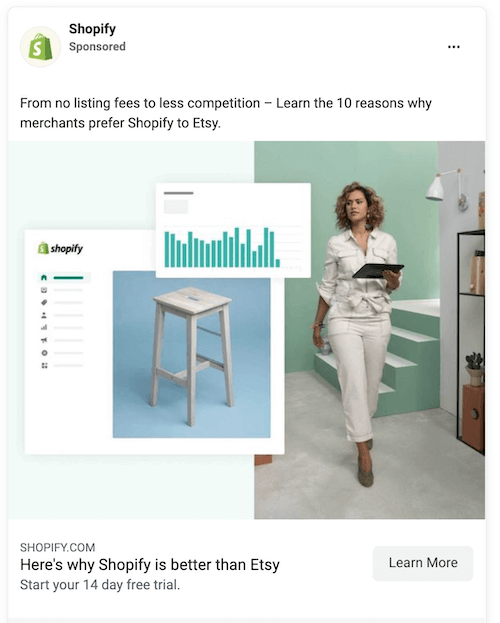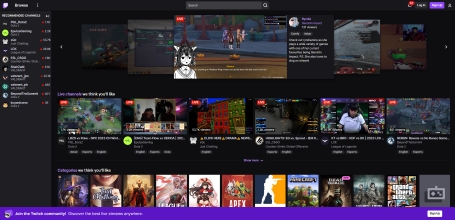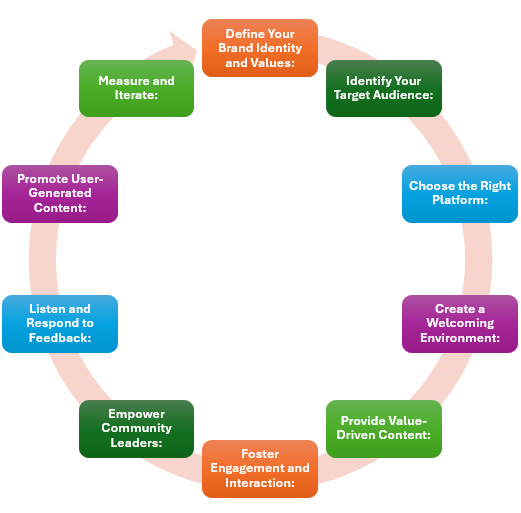List of the Content

- Introduction to Social Media Marketing (SMM)
- History of Social Media
- Social Media Market
- Global Population on Social Media
- Future of Social Media Marketing
- The Advantages of Social Media Marketing
- Building an Effective Social Media Strategy
- Understanding Social Listening: Its Significance in Digital Marketing
- Crafting a Robust Social Media Marketing Content
- Navigating the Social Media Engagement Journey
- Key Performance Indicators (KPIs) for Social Media Marketing
- Role of Social Media Messaging Apps in Modern Marketing Strategies
- What Is Social Entertainment
- Online Brand Community and Social Media Marketing
- Distinction Between Search Engine Marketing (SEM) From Social Media Marketing (SMM)
Introduction to Social Media Marketing (SMM)
Social Media Marketing (SMM) has emerged as a cornerstone of modern digital marketing strategies, revolutionizing the way businesses connect with their target audiences and engage with customers online. At its core, SMM leverages social media platforms such as Facebook, Instagram, Twitter, LinkedIn, and others to build brand awareness, foster customer relationships, and drive business growth. Unlike traditional marketing channels, social media offers unparalleled opportunities for direct interaction and engagement with consumers in real-time, enabling brands to cultivate authentic connections and build communities around their products or services. Moreover, the dynamic nature of social media platforms facilitates the rapid dissemination of content, allowing businesses to amplify their messaging and reach wider audiences with relative ease. From creating compelling content to leveraging paid advertising and influencer partnerships, SMM encompasses a diverse range of strategies and tactics aimed at maximizing brand visibility, generating leads, and driving conversions. As social media continues to evolve and new platforms emerge, staying abreast of the latest trends, technologies, and best practices in SMM is essential for businesses seeking to remain competitive in today’s digital landscape. In this introductory exploration of SMM, we will delve into the fundamental principles, strategies, and tools that underpin effective social media marketing campaigns, providing insights and practical guidance for businesses looking to harness the power of social media to achieve their marketing objectives.
History of Social Media
Social media has become an integral part of our daily lives, shaping how we connect, communicate, and share information with others. However, the concept of social media dates back much further than many realize, with roots stretching back centuries.
The history of social media can be traced back to the earliest forms of human communication, from cave paintings and ancient civilizations to the printing press and the postal system. These early mediums allowed people to share ideas, stories, and news over long distances, laying the groundwork for the digital networks we use today.
In the modern era, the evolution of social media accelerated with the advent of the internet and digital technology. The early days of the internet saw the emergence of bulletin board systems (BBS) and online forums, where users could engage in discussions and exchange messages on topics of mutual interest.
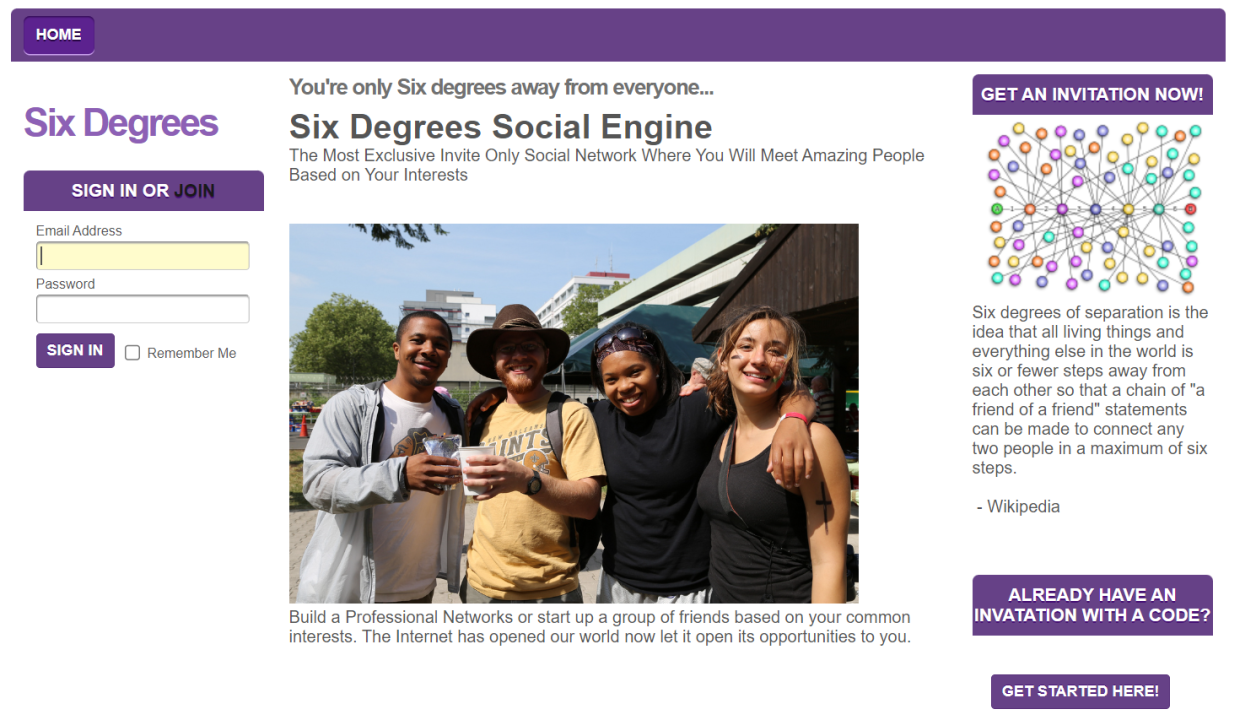
FIGURE 5‑1: SIX DEGREES SOCIAL MEDIA PLATFORM LAUNCHED IN 1997
In 2004, Facebook was launched by Mark Zuckerberg and his college roommates, quickly becoming the dominant force in social media with its innovative features and widespread adoption. Facebook’s success inspired a wave of new platforms, including Twitter, YouTube, LinkedIn, and Instagram, each catering to different types of content and communication.
The late 1990s and early 2000s witnessed the rise of the first true social networking sites, such as Six Degrees, Friendster, and MySpace.
These platforms introduced features like user profiles, friends lists, and messaging, paving the way for the social media landscape we know today.
The proliferation of smartphones and mobile apps in the late 2000s further accelerated the growth of social media, making it more accessible and ubiquitous than ever before. Today, social media platforms encompass a wide range of functionalities, from sharing photos and videos to live streaming, messaging, and e-commerce.

FIGURE 5‑2: MY SPACE SOCIAL MEDIA PLATFORM LAUNCHED IN 2003
As social media continues to evolve, it raises important questions about privacy, security, and the impact of digital technology on society. However, it also offers unprecedented opportunities for connection, collaboration, and creativity, empowering individuals and communities to share their voices and stories with the world.
FIGURE 5‑3: FRIENDSTER SOCIAL MEDIA PLATFORM LAUNCHED IN 2003
In conclusion, the history of social media is a testament to humanity’s innate desire to connect and communicate with others. From ancient forms of communication to the digital networks of today, social media has undergone a remarkable evolution, shaping the way we interact and engage with each other in the digital age.
FIGURE 5‑4: SOCIAL MEDA TIMELINE (IMAGE SOURCE: DATAREPORTAL.COM)
Social Media Market
Facebook, the dominant player in the market, achieved a significant milestone by becoming the first social network to surpass one billion registered accounts. Today, it boasts an impressive user base of over three billion monthly active users. Under the umbrella of Meta Platforms, Facebook operates alongside three other major social media platforms, each boasting one billion monthly active users: WhatsApp, Facebook Messenger, and Instagram. In the third quarter of 2023, Facebook reported approximately four billion monthly users across its core Family products.
The United States and China are home to some of the most prominent social platforms globally. While many top-ranked social networks, boasting over 100 million users, originate from the United States, Chinese platforms such as WeChat[1], QQ[2], and the video-sharing app Douyin[3] have gained significant traction within their respective regions.
FIGURE 5‑5: CHINESE SOCIAL MEDIA APP QQ
This widespread appeal can be attributed to the local context and content that these platforms offer. Notably, Douyin’s popularity has prompted the platform to launch an international version of its network.
FIGURE 5‑6: CHINESE VIDEO-SHARING APP DOUYIN
FIGURE 5‑7: MOST POPULAR SOCIAL NETWORKS WORLDWIDE AS OF JANUARY 2024, RANKED BY NUMBER OF MONTHLY ACTIVE USERS (IMAGE SOURCE: HTTPS://WWW.STATISTA.COM/)
Major social networks typically offer multilingual support, facilitating connections among users across geographical, political, and economic boundaries. As of 2022, social networking sites are projected to have reached approximately 3.96 billion users, with ongoing growth anticipated. This expansion is fueled by the increasing adoption of mobile devices and the rising popularity of mobile social networks in previously untapped markets.
Global Population on Social Media
In today’s interconnected world, social media has become an integral part of our daily lives, shaping how we communicate, share information, and connect with others. The latest statistics reveal a fascinating insight into the global population’s engagement with social media platforms.
As per the latest data from Datareportal[4]‘s January 2024 global overview, the reach of social media has witnessed steady growth:
![Global social media statistics research summary 2024 [Jan 2024]](https://digital-marketing.graffitiworld.in/wp-content/uploads/2025/01/global-social-media-statistics-research-summary-20-4.png)
FIGURE 5‑8: SOCIAL MEDIA USE VS TOTAL POPULATION
Over 62.3% of the global population is now active on social media. This translates to approximately 5.04 billion individuals worldwide, with a notable addition of 266 million new users in the past year alone. On average, people spend 2 hours and 23 minutes daily engaging with social media platforms.
What’s even more remarkable is the continuous growth trajectory observed in social media adoption. With each passing year, millions of new users join these digital communities, further expanding the social media landscape and diversifying the user base.
![Global social media statistics research summary 2024 [Jan 2024]](https://digital-marketing.graffitiworld.in/wp-content/uploads/2025/01/global-social-media-statistics-research-summary-20-5.png)
FIGURE 5‑9: OVERVIEW OF SOCIAL MEDIA USE
This phenomenon isn’t confined to any particular region or demographic. Instead, it spans across continents, cultures, and age groups, highlighting the universal appeal and relevance of social media in today’s society.
Furthermore, the rise of social media has catalyzed transformative changes in various aspects of our lives, from how we consume news and entertainment to how we interact with businesses and brands. It has empowered individuals to amplify their voices, forge new connections, and participate in global conversations like never before.
While there has been a slight decrease in the average daily time spent on social media by 4 minutes, the rate of adoption continues to soar. Presently, a striking 94.2% of internet users are active on social media, showcasing robust growth. Moreover, the gender distribution is relatively balanced, with a slightly higher representation of male identities compared to female identities.
FIGURE 5‑10: DAILY TIME SPEND USING SOCIAL MEDIA (IMAGE SOURCE: DATAREPORTAL.COM)
Future of Social Media Marketing
As we step into the future, the landscape of social media marketing continues to evolve at a rapid pace, presenting both challenges and opportunities for businesses looking to connect with their audience in meaningful ways. This note delves into the key trends and developments shaping the future of social media marketing.
Video Dominance:
Video content is poised to dominate the social media landscape, with platforms increasingly prioritizing video-based formats such as short-form videos, livestreaming, and immersive experiences like augmented reality (AR) and virtual reality (VR). Businesses will need to adapt their strategies to leverage the power of video storytelling to captivate and engage audiences effectively.
Rise of Influencer Marketing:
Influencer marketing will continue to play a significant role in social media marketing, with brands collaborating with influencers to amplify their reach and credibility. However, the landscape is shifting towards micro-influencers and nano-influencers who boast smaller but highly engaged and niche audiences, offering more authentic and personalized connections.
Social Commerce:
The convergence of social media and e-commerce will accelerate, with platforms integrating shopping functionalities directly into the user experience. From shoppable posts to in-app checkout features, social commerce will enable seamless transactions and drive direct sales, blurring the lines between discovery and purchase.
Personalization and AI:
Personalization will remain paramount in social media marketing, with advancements in artificial intelligence (AI) enabling more sophisticated targeting, content recommendation, and customer segmentation. AI-powered chatbots and virtual assistants will revolutionize customer service and engagement, delivering tailored experiences at scale.
Privacy and Data Protection:
As concerns around data privacy and security continue to mount, social media platforms will face increasing scrutiny and regulatory oversight. Businesses will need to prioritize transparency, consent, and data protection practices to build and maintain trust with their audience.
Emerging Platforms and Trends:
The social media landscape will witness the emergence of new platforms and trends, driven by changing consumer behaviors and technological innovations. From niche communities and audio-based platforms to the metaverse and Web3, businesses will need to stay agile and experiment with emerging trends to stay ahead of the curve.
In conclusion, the future of social media marketing holds immense potential for businesses willing to embrace innovation, creativity, and adaptability. By staying abreast of emerging trends, leveraging cutting-edge technologies, and prioritizing authentic connections with their audience, businesses can navigate the evolving landscape of social media marketing and drive sustainable growth in the digital age.
The Advantages of Social Media Marketing
In today’s digitally connected world, Social Media Marketing (SMM) has emerged as a powerful tool for businesses to reach and engage with their target audience. This chapter explores the myriad advantages of leveraging social media platforms for marketing purposes.
Enhanced Reach and Visibility:
Social media platforms have billions of active users worldwide, providing businesses with an unparalleled opportunity to expand their reach and increase brand visibility. Through strategic targeting and content optimization, businesses can connect with potential customers across geographical boundaries.
Cost-Effectiveness:
Compared to traditional advertising channels such as television or print media, social media marketing offers a cost-effective solution for businesses of all sizes. Many social media platforms offer free sign-up options and allow businesses to reach a large audience with minimal investment in paid advertising.
Targeted Advertising:
Social media platforms collect vast amounts of user data, including demographic information, interests, and online behavior. This wealth of data enables businesses to create highly targeted advertising campaigns, ensuring that their messages are delivered to the most relevant audience segments.
Engagement and Interaction:
Unlike traditional forms of advertising, social media marketing facilitates two-way communication between businesses and consumers. Through likes, comments, and shares, businesses can engage with their audience in real-time, building brand loyalty and fostering meaningful relationships.
Insightful Analytics:
Social media platforms provide robust analytics tools that allow businesses to track the performance of their marketing campaigns in real-time. From audience demographics to engagement metrics, these insights enable businesses to make data-driven decisions and optimize their marketing strategies for better results.
Brand Building and Awareness:
Social media offers a platform for businesses to showcase their brand personality and values, humanizing their brand and making it more relatable to consumers. By consistently sharing valuable content and engaging with their audience, businesses can strengthen brand awareness and establish themselves as industry leaders.
Viral Potential:
Social media has the power to make content go viral, reaching millions of users within a short span of time. Businesses that create compelling and shareable content stand the chance of exponentially increasing their reach and exposure, leading to enhanced brand recognition and potential sales.
In conclusion, Social Media Marketing presents numerous advantages for businesses seeking to enhance their online presence and connect with their target audience. By leveraging the unique features of various social media platforms, businesses can drive engagement, increase brand visibility, and ultimately achieve their marketing objectives in an increasingly digital landscape.
Building an Effective Social Media Strategy
In today’s digital age, a well-crafted social media strategy is essential for businesses looking to succeed in an increasingly competitive online landscape. This chapter outlines the key components and best practices for developing an effective social media strategy.

FIGURE 5‑11: BUILDING AN EFFECTIVE SOCIAL MEDIA STRATEGY
Define Clear Objectives:
Before diving into social media, it’s crucial to define clear objectives that align with your overall business goals. Whether your aim is to increase brand awareness, drive website traffic, generate leads, or boost sales, establishing specific and measurable objectives will provide direction and focus for your social media efforts.
Know Your Audience:
Understanding your target audience is fundamental to crafting a successful social media strategy. Conduct thorough research to identify the demographics, interests, behaviors, and preferences of your audience. This insight will guide your content creation, messaging, and platform selection to ensure maximum engagement and relevance.
Choose the Right Platforms:
With a plethora of social media platforms available, it’s important to choose the ones that align with your objectives and resonate with your target audience. Consider factors such as demographics, user engagement, and the nature of your content when selecting platforms. Focus your efforts on a few key platforms where your audience is most active rather than spreading yourself too thin.
Develop Compelling Content:
Content is at the heart of any successful social media strategy. Create high-quality, relevant, and engaging content that adds value to your audience’s lives. This can include informative articles, eye-catching visuals, entertaining videos, and interactive polls or quizzes. Tailor your content to suit each platform’s unique format and audience preferences.
Implement Consistent Branding:
Consistency is key to building brand recognition and trust on social media. Develop a cohesive brand identity, including visual elements such as logos, colors, and fonts, and maintain consistency across all your social media profiles. Craft a consistent tone of voice that reflects your brand’s personality and resonates with your audience.
Engage and Interact:
Social media is inherently social, so don’t just broadcast your messages—actively engage with your audience. Respond promptly to comments, messages, and mentions, and participate in relevant conversations within your industry or community. Encourage user-generated content and foster a sense of community among your followers.
Monitor and Measure Performance:
Regularly monitor the performance of your social media efforts using analytics tools provided by each platform. Track key metrics such as reach, engagement, click-through rates, and conversions to evaluate the effectiveness of your strategy. Use these insights to refine your approach, identify areas for improvement, and optimize your content and tactics accordingly.
By following these guidelines and continuously adapting to changes in the social media landscape, businesses can build and execute an effective social media strategy that drives meaningful results and contributes to their overall success in the digital realm.
Understanding Social Listening: Its Significance in Digital Marketing
“Listening” in social media marketing refers to the practice of monitoring and analyzing conversations, mentions, and feedback about your brand, products, or industry across various social media platforms. It involves paying attention to what people are saying about your brand, your competitors, and relevant topics, and using that information to inform your marketing strategies, improve customer satisfaction, and enhance your overall brand reputation.
Why listening in social media marketing is important
Listening in social media marketing is crucial for understanding and engaging with your audience effectively. By actively monitoring conversations, mentions, and feedback across various social media platforms, businesses can gain valuable insights into customer sentiment, preferences, and pain points. This allows them to tailor their marketing strategies, content, and messaging to better resonate with their target audience. Additionally, social media listening enables businesses to stay updated on emerging trends, discussions, and competitors’ activities, helping them identify new opportunities and adjust their strategies accordingly. By actively participating in conversations, addressing customer concerns, and demonstrating responsiveness, businesses can build stronger relationships with their audience, enhance brand reputation, and ultimately drive better business outcomes. Therefore, incorporating social media listening into marketing efforts is essential for staying competitive in today’s digital landscape.
The following points underscore the importance of actively participating in digital conversations through social listening, revealing its myriad benefits.
FIGURE 5‑12: IMPORTANCE OF SOCIAL LISTENING
Understanding Audience Sentiment: By listening to what people are saying about your brand, you can gauge the sentiment surrounding your products or services. This allows you to identify areas where you’re excelling and areas where you may need improvement.
Identifying Trends and Opportunities: Social media listening helps you stay updated on emerging trends, discussions, and topics relevant to your industry. This insight can inform your content strategy and help you capitalize on opportunities as they arise.
Managing Reputation: Monitoring social media conversations allows you to address any negative feedback or complaints promptly. By engaging with dissatisfied customers and resolving issues publicly, you can demonstrate your commitment to customer satisfaction and protect your brand’s reputation.
Competitive Analysis: Listening to what people are saying about your competitors can provide valuable insights into their strengths, weaknesses, and market positioning. This information can inform your own strategies and help you identify areas where you can differentiate yourself.
Content Inspiration: Social media listening can provide inspiration for your content strategy by highlighting topics, questions, or pain points that resonate with your audience. This can help you create more relevant and engaging content that drives interaction and builds brand loyalty.
To effectively listen in social media marketing, businesses often use social media monitoring tools that allow them to track mentions, keywords, and conversations across multiple platforms. These tools provide analytics and insights that enable businesses to make data-driven decisions and optimize their social media strategies.
Tools Available for Social Media Listening
There are several tools available for social media listening, each offering unique features and capabilities to help businesses monitor and analyze conversations, mentions, and trends across various social media platforms. Here are some popular tools for social media listening:
Hootsuite: Hootsuite is a comprehensive social media management platform that includes features for social listening. It allows users to monitor mentions, keywords, and hashtags across multiple social media channels in real-time, as well as schedule posts, engage with followers, and analyze performance metrics.
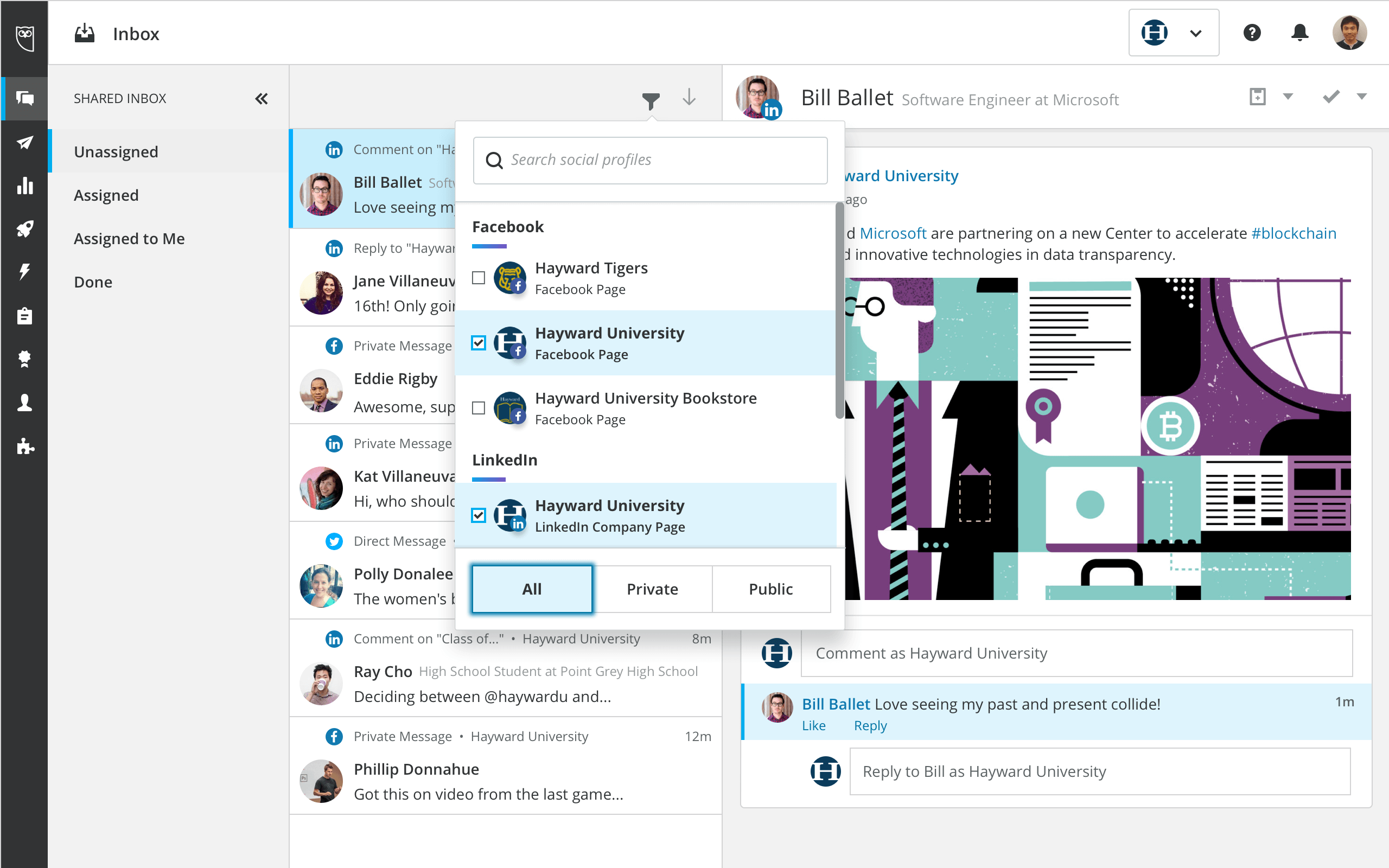
FIGURE 5‑13: HOOTSUITE SOCIAL MEDIA MANAGEMENT PLATFORM
Sprout Social: Sprout Social offers social media management and listening tools that enable businesses to monitor conversations, track keywords and hashtags, and analyze audience sentiment. It also provides reporting and analytics to measure the effectiveness of social media efforts.
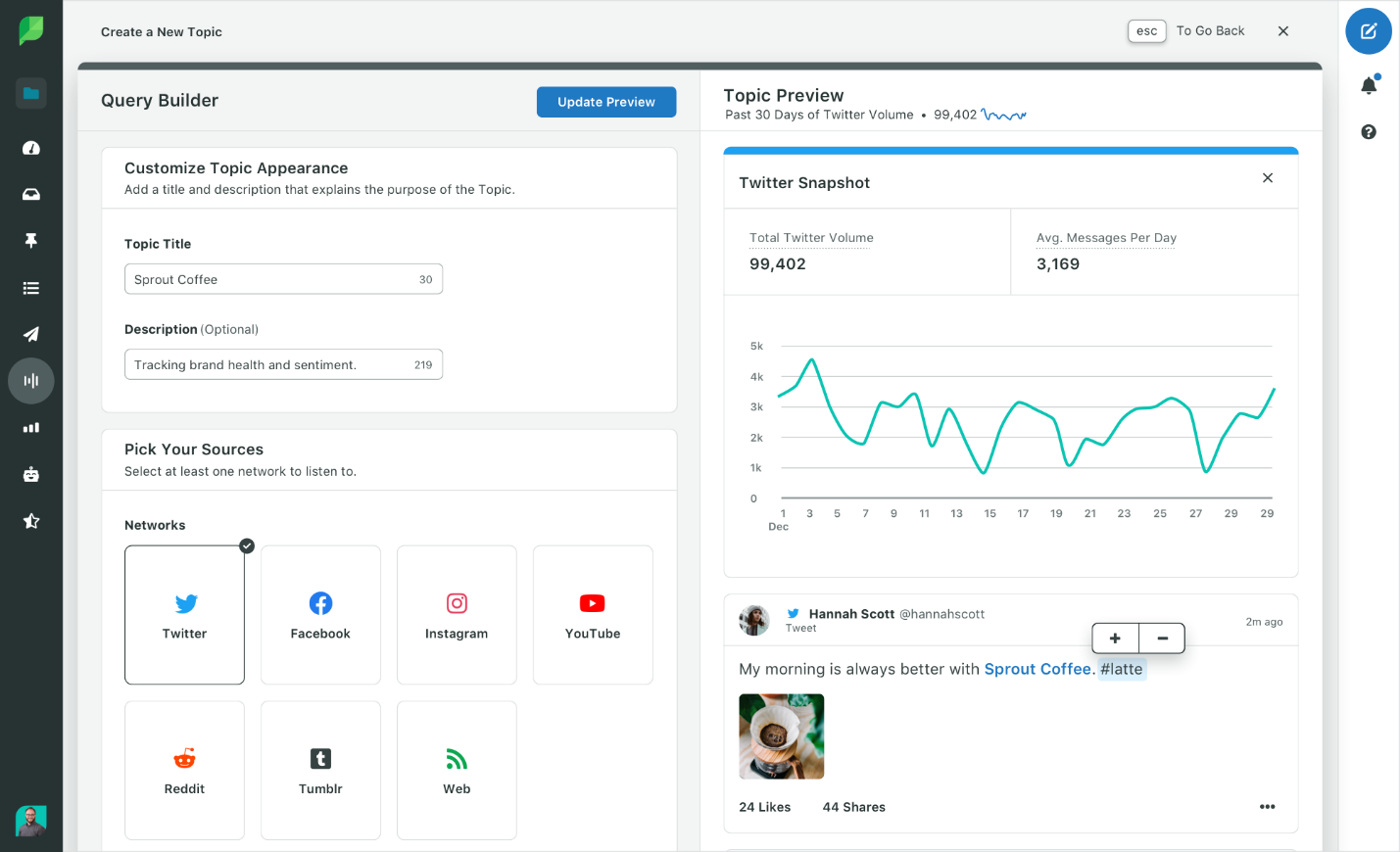
FIGURE 5‑14: SPROUT MEDIA MANAGEMENT AND LISTENING TOOLS
Brandwatch: Brandwatch is an enterprise-level social listening platform that provides advanced analytics and insights for monitoring brand mentions, sentiment analysis, and tracking industry trends. It offers customizable dashboards, competitive benchmarking, and data visualization tools to help businesses make data-driven decisions.
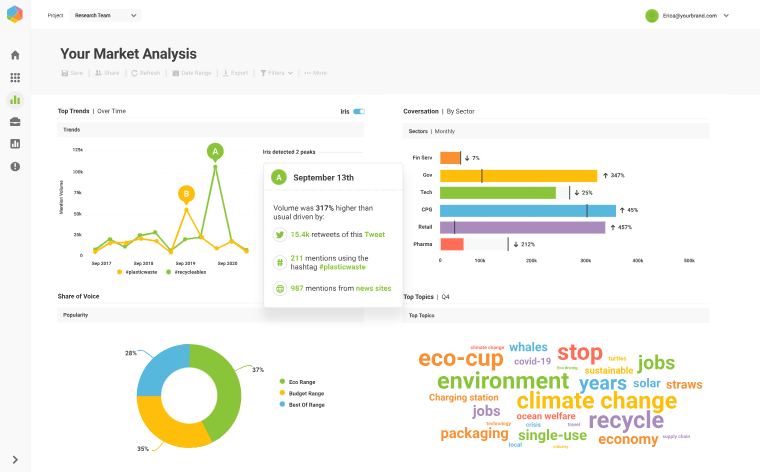
FIGURE 5‑15: BRANDWATCH IS SOCIAL LISTENING PLATFORM
Mention: Mention is a social media monitoring tool that allows businesses to track brand mentions, monitor competitors, and analyze sentiment across various online channels, including social media, news sites, and blogs. It provides real-time alerts and customizable reports to keep users informed about relevant conversations.
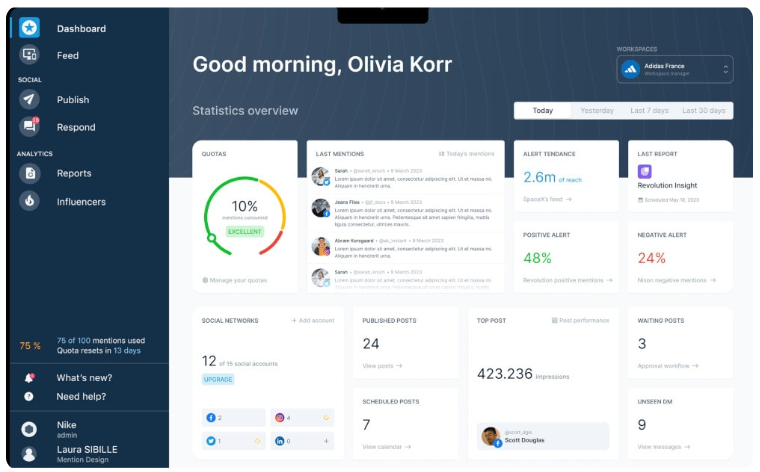
FIGURE 5‑16: MENTION SOCIAL MEDIA MONITORING TOOL (IMAGE SOURCE: HTTPS://BRAND24.COM/)
Talkwalker: Talkwalker offers social listening and analytics tools for monitoring brand mentions, tracking trends, and analyzing audience engagement across social media platforms and other online channels. It provides sentiment analysis, influencer identification, and competitive benchmarking features to help businesses optimize their social media strategies.
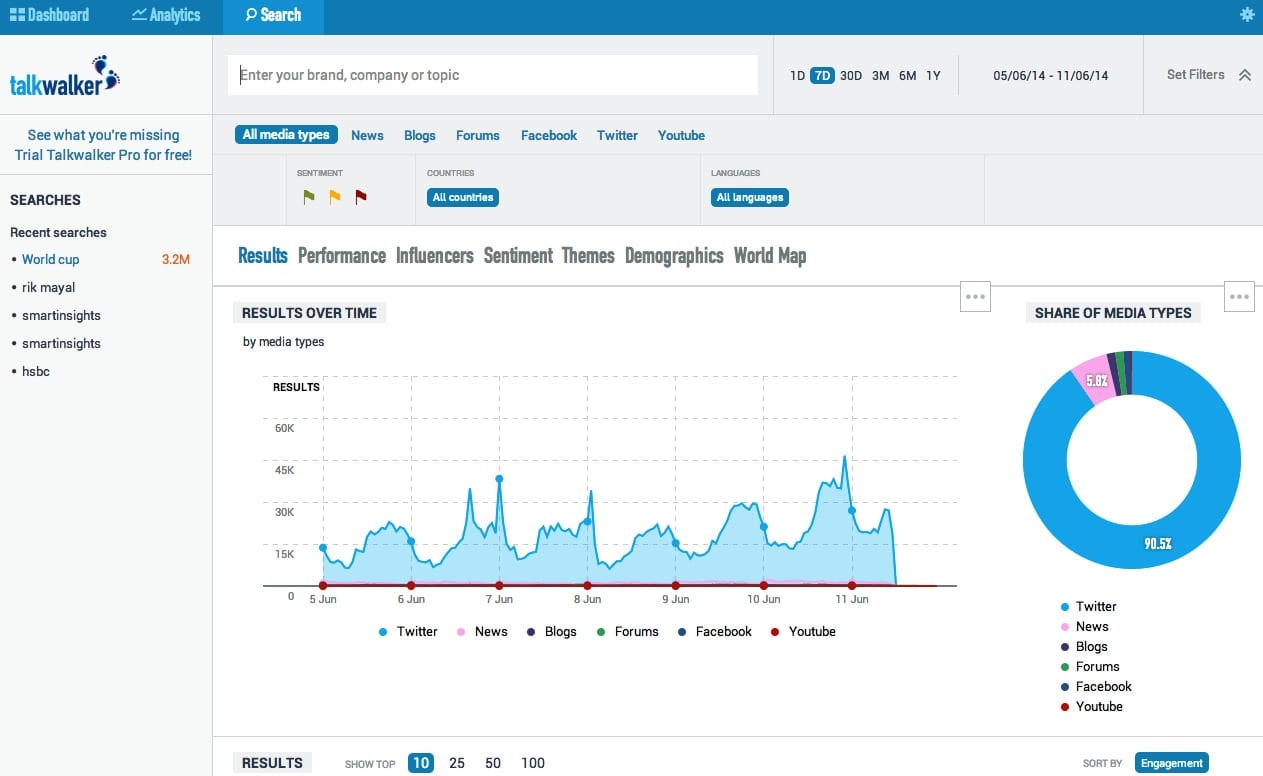
FIGURE 5‑17: TALKWALKER SOCIAL LISTENING AND ANALYTICS TOOLS
Buffer: Buffer is a social media management platform that also offers basic social listening capabilities. It allows users to monitor mentions and keywords on social media platforms, schedule posts, and analyze performance metrics through its reporting features.
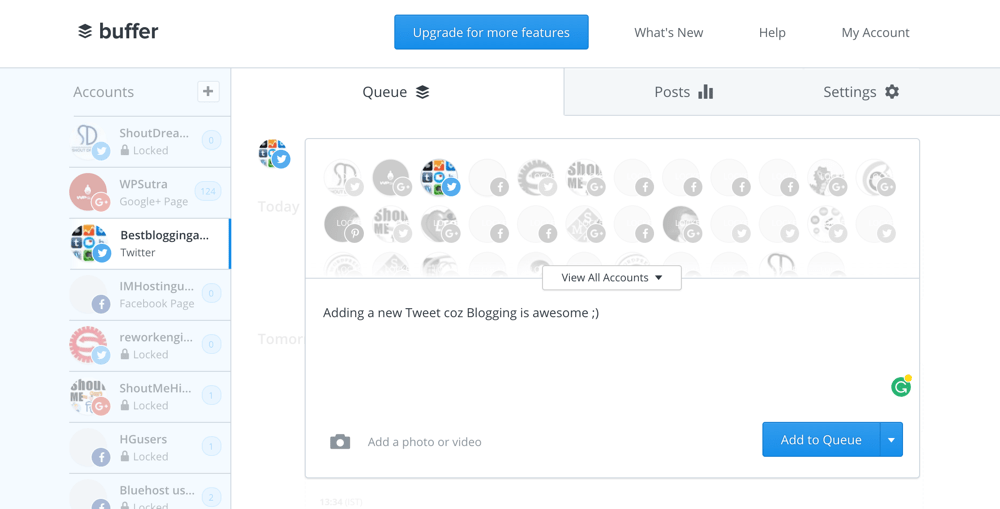
FIGURE 5‑18: BUFFER MEDIA MANAGEMENT PLATFORM
These are just a few examples of tools available for social media listening. Depending on your specific needs and budget, you can explore these options or other alternatives to find the right solution for your business.
Crafting a Robust Social Media Marketing Content
Crafting a robust social media marketing content strategy is pivotal in today’s digital landscape, where the online presence of businesses plays a significant role in their success. A well-crafted strategy serves as the foundation for effectively engaging with audiences, building brand awareness, driving website traffic, generating leads, and ultimately, achieving business objectives. By meticulously planning and curating content that resonates with target audiences, businesses can foster meaningful connections, establish credibility, and differentiate themselves in competitive markets. Furthermore, a strategic approach to content creation enables brands to showcase their unique value proposition, share compelling stories, and convey their brand personality authentically. Through consistent and relevant content delivery, businesses can stay top-of-mind with their audience, nurture relationships, and cultivate brand loyalty over time. Additionally, an effective content strategy allows businesses to adapt to evolving trends, preferences, and behaviors in the digital landscape, ensuring their relevance and staying power in an ever-changing environment. Ultimately, the importance of crafting a robust social media marketing content strategy lies in its ability to drive engagement, foster brand affinity, and propel business growth in the dynamic world of social media.
Here’s a breakdown of steps to create a social media marketing content strategy:
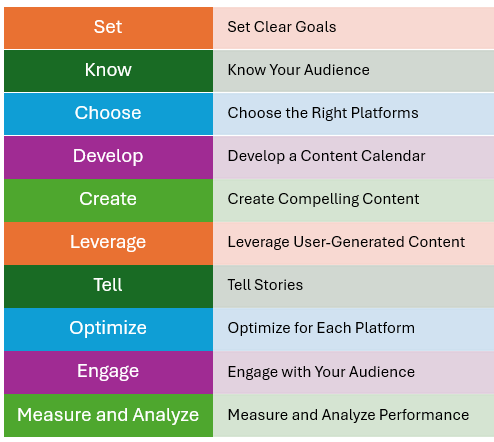
FIGURE 5‑19: BREAKDOWN OF STEPS TO CREATE A SOCIAL MEDIA MARKETING CONTENT STRATEGY
Set Clear Goals: Define specific, measurable goals for your social media efforts. Whether it’s increasing brand awareness, driving website traffic, generating leads, or boosting sales, having clear objectives will guide your content strategy.
Know Your Audience: Conduct thorough research to understand your target audience’s demographics, interests, behaviors, and pain points. This information will help you tailor your content to resonate with your audience and address their needs effectively.
Choose the Right Platforms: Determine which social media platforms your target audience frequents the most. Focus your efforts on platforms where your audience is most active and where your content is most likely to reach and engage them.

FIGURE 5‑20: AN APPEALING AD DESIGNED BY A GRAPHIC DESIGNING COMPANY
FIGURE 5‑21: A SOCIAL MEDIA AD OF A FOOD AGGREGATOR COMPANY
Develop a Content Calendar: Create a content calendar outlining the types of content you’ll publish, the topics you’ll cover, and the posting schedule. This ensures consistency and helps you stay organized with your content creation efforts.
Create Compelling Content: Produce high-quality content that provides value to your audience. This can include blog posts, videos, infographics, podcasts, and more. Experiment with different formats and types of content to keep your audience engaged.
Leverage User-Generated Content: Encourage your audience to create and share content related to your brand. User-generated content not only provides social proof but also fosters community engagement and authenticity.
Tell Stories: Incorporate storytelling into your content to connect with your audience on a deeper level. Share behind-the-scenes glimpses, customer testimonials, and personal anecdotes to humanize your brand and build emotional connections.
Optimize for Each Platform: Tailor your content for each social media platform based on its unique features and audience preferences. Optimize your posts for maximum visibility and engagement on each platform.
Engage with Your Audience: Actively engage with your audience by responding to comments, messages, and mentions. Foster conversations, answer questions, and show appreciation for user interactions to build relationships and loyalty.
Measure and Analyze Performance: Track key metrics such as engagement, reach, clicks, conversions, and ROI to evaluate the effectiveness of your content strategy. Use analytics tools to gain insights into what’s working well and what areas need improvement.
By following these steps, you can create a comprehensive social media marketing content strategy that drives meaningful results for your business.
The 70/20/10 Content Approach
The 70/20/10 content approach is a strategy used by marketers to allocate resources and efforts across different types of content. It suggests dividing content creation and distribution into three categories:
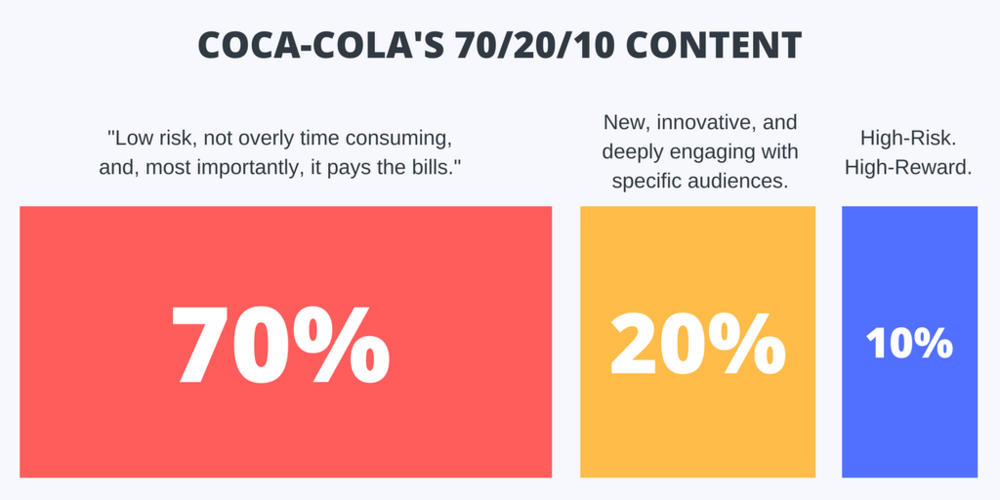
FIGURE 5‑22: COCA-COLA’S 70/20/10 CONTENT STRATEGY
70% Evergreen Content: The majority of your content (70%) should focus on evergreen content, which is timeless and relevant to your audience regardless of when it’s published. Evergreen content tends to have a longer shelf life and can continue to attract traffic and engagement over time. Examples include how-to guides, tutorials, educational resources, and industry insights. This content provides value to your audience consistently and helps establish your brand as a trusted source of information.
FIGURE 5‑23: FACEBOOK AD WITH 70% CONTENT (IMAGE SOURCE: HTTPS://WWW.WORDSTREAM.COM/)
20% Engagement Content: Around 20% of your content should be dedicated to engagement-focused content, which aims to foster interaction, conversation, and community engagement. This type of content is often more interactive, entertaining, or relatable, encouraging your audience to like, comment, share, and participate. Examples include polls, quizzes, contests, behind-the-scenes content, user-generated content, and interactive stories. Engagement content helps deepen connections with your audience, increase brand visibility, and build a sense of community around your brand.
FIGURE 5‑24: FACEBOOK AD WITH 20% CONTENT (IMAGE SOURCE: HTTPS://WWW.WORDSTREAM.COM/)
10% Promotional Content: The remaining 10% of your content can be promotional in nature, focused on directly promoting your products, services, or offers. While it’s essential to promote your offerings to drive sales and conversions, excessive promotional content can turn off your audience and diminish engagement. Therefore, it’s recommended to keep promotional content to a minimum and ensure it’s balanced with valuable, non-promotional content. Examples of promotional content include product announcements, special offers, sales promotions, and customer testimonials. This content should be strategically integrated into your overall content mix to complement and support your broader marketing objectives.
FIGURE 5‑25: FACEBOOK AD WITH 10% CONTENT (IMAGE SOURCE: HTTPS://WWW.WORDSTREAM.COM/)
By adopting the 70/20/10 content approach, marketers can maintain a healthy balance between providing value to their audience, fostering engagement, and driving promotional activities. This strategy helps ensure that content efforts are focused on building long-term relationships with customers while still driving business results.
Navigating the Social Media Engagement Journey
The Social Media Consumer Engagement ladder is a concept that illustrates the various levels of interaction and engagement that consumers have with a brand or business on social media platforms. It typically consists of several stages, each representing a different level of engagement and commitment from the consumer. Here’s a breakdown of the typical stages:

FIGURE 5‑26: SOCIAL MEDIA ENGAGEMENT JOURNEY
Observation: At the bottom of the ladder, consumers are passive observers. They may follow your brand’s social media profiles but rarely interact with your content. They might simply scroll through posts without engaging with likes, comments, or shares.
Awareness: In this stage, consumers become more aware of your brand. They may interact with your content by liking posts or following your social media accounts. However, their engagement is still relatively low-key, and they may not actively seek out your brand’s content.
Interest: As consumers move up the ladder, they begin to show a genuine interest in your brand. They may start engaging more actively with your content, leaving comments, asking questions, or sharing posts with their own networks. They might also start exploring your website or other online channels to learn more about your products or services.
Engagement: At this stage, consumers are fully engaged with your brand. They not only interact with your content but also actively participate in discussions, polls, or contests. They may share user-generated content related to your brand or participate in online communities and forums where your brand is present.
Advocacy: The highest level of the ladder is advocacy, where consumers become advocates for your brand. They are loyal supporters who actively promote your brand to their friends, family, and followers. They may create their own content about your brand, write positive reviews, or recommend your products/services to others.
Understanding the Social Media Consumer Engagement ladder can help businesses tailor their social media strategies to nurture relationships with consumers at each stage of the journey, ultimately driving brand awareness, loyalty, and advocacy.
Key Performance Indicators (KPIs) for Social Media Marketing
The best Key Performance Indicators (KPIs) for social media marketing depend on your specific goals and objectives. However, here are some commonly used KPIs that can help you measure the effectiveness of your social media efforts:
Engagement Rate: This measures the level of interaction your content receives from your audience. It includes likes, shares, comments, and other forms of engagement. A higher engagement rate indicates that your content is resonating with your audience.
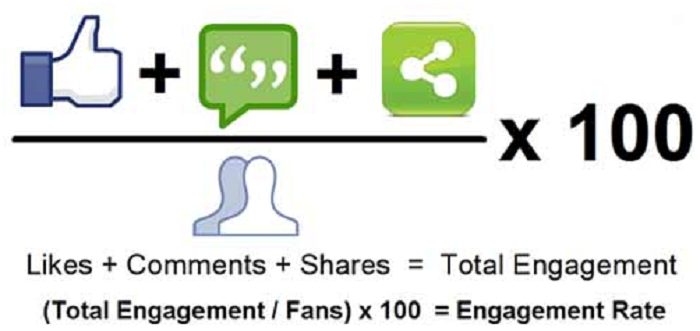
FIGURE 5‑27: ENGAGEMENT RATE
Reach and Impressions: Reach refers to the total number of unique users who have seen your content, while impressions represent the total number of times your content has been displayed. Monitoring reach and impressions helps you understand the visibility of your content and its potential impact.
Click-Through Rate (CTR): CTR measures the percentage of people who clicked on a link or call-to-action (CTA) in your social media posts. It indicates how effective your content is at driving traffic to your website or landing page.
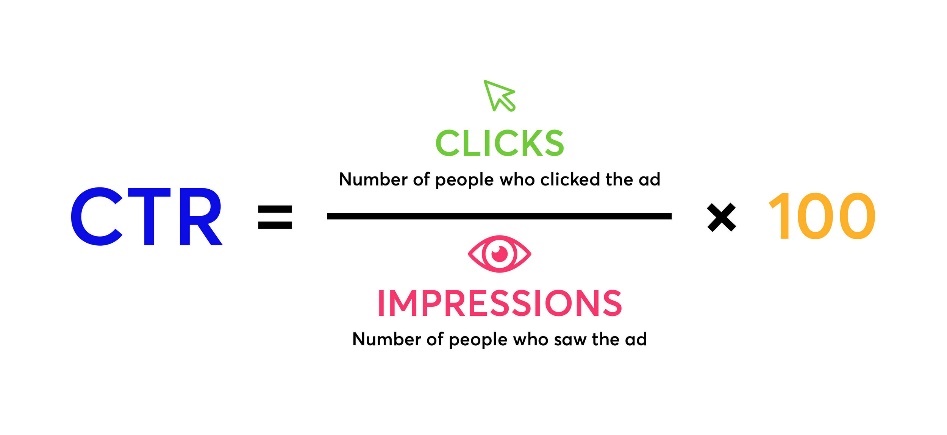
FIGURE 5‑28: FORMULA OF CTR
Conversion Rate: Conversion rate measures the percentage of users who complete a desired action, such as making a purchase, signing up for a newsletter, or downloading a resource, after interacting with your social media content.
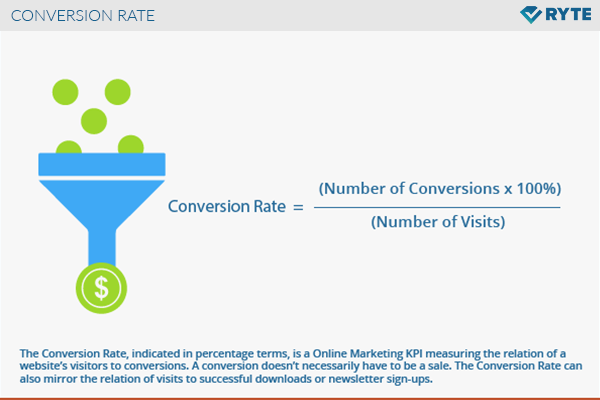
FIGURE 5‑29: CONVERSION RATE FORMULA
Customer Acquisition Cost (CAC): CAC measures the cost of acquiring a new customer through your social media marketing efforts. It helps you understand the efficiency of your marketing spend in acquiring new customers.

FIGURE 5‑30: CUSTOMER ACQUISITION COST (CAC)
Social Media Share of Voice (SOV): SOV measures your brand’s presence and visibility compared to your competitors on social media platforms. It helps you understand your brand’s share of the overall conversation within your industry or niche.

FIGURE 5‑31: SOCIAL MEDIA SHARE OF VOICE (SOV)
Brand Sentiment: This measures the overall sentiment or attitude of your audience towards your brand on social media. Positive sentiment indicates that your audience perceives your brand favorably, while negative sentiment may indicate areas for improvement.
Customer Lifetime Value (CLV): CLV measures the total value a customer brings to your business over their entire relationship with your brand. Monitoring CLV helps you understand the long-term impact of your social media marketing efforts on customer loyalty and revenue generation.

FIGURE 5‑32: CUSTOMER LIFETIME VALUE (CLV) (IMAGE SOURCE: HTTPS://BUSINESS.TRUSTEDSHOPS.COM/)
Social Media Followers Growth Rate: This measures the rate at which your social media following is growing over time. A steady increase in followers indicates that your content is attracting new audiences and resonating with existing followers.
Return on Investment (ROI): ROI measures the financial return generated from your social media marketing efforts relative to the cost of those efforts. It helps you evaluate the profitability and effectiveness of your social media campaigns.
Choose KPIs that align with your specific goals and objectives, and regularly monitor and analyze these metrics to measure the success of your social media marketing efforts.
Micro and Macro Conversions in Social Media Marketing
In social media marketing, micro and macro conversions are metrics used to measure different levels of user engagement and actions taken by individuals interacting with a brand’s social media content. Here’s a breakdown of each:
Micro Conversions:
Micro conversions refer to smaller, incremental actions that users take that indicate engagement and interest but may not directly lead to a sale or significant business outcome.
Examples of micro conversions in social media marketing include likes, shares, comments, follows, clicks on links, video views, downloads of resources, or signing up for newsletters.
These actions are important because they signal interest and interaction with the brand, which can contribute to building brand awareness, loyalty, and trust over time.
While micro conversions may not result in immediate revenue generation, they are essential steps in nurturing leads and guiding users through the marketing funnel towards macro conversions.
Macro Conversions:
Macro conversions represent more significant actions that directly contribute to achieving the brand’s business objectives, such as sales, lead generation, or other measurable outcomes that impact the bottom line.
Examples of macro conversions in social media marketing include making a purchase, filling out a contact form, requesting a demo, subscribing to a service, or any action that directly leads to revenue generation or valuable business leads.
Unlike micro conversions, macro conversions are typically the ultimate goals of a social media marketing campaign, as they directly contribute to the brand’s bottom line and business success.
While macro conversions are the primary focus, it’s important to track both micro and macro conversions to understand the complete customer journey and optimize social media strategies accordingly.
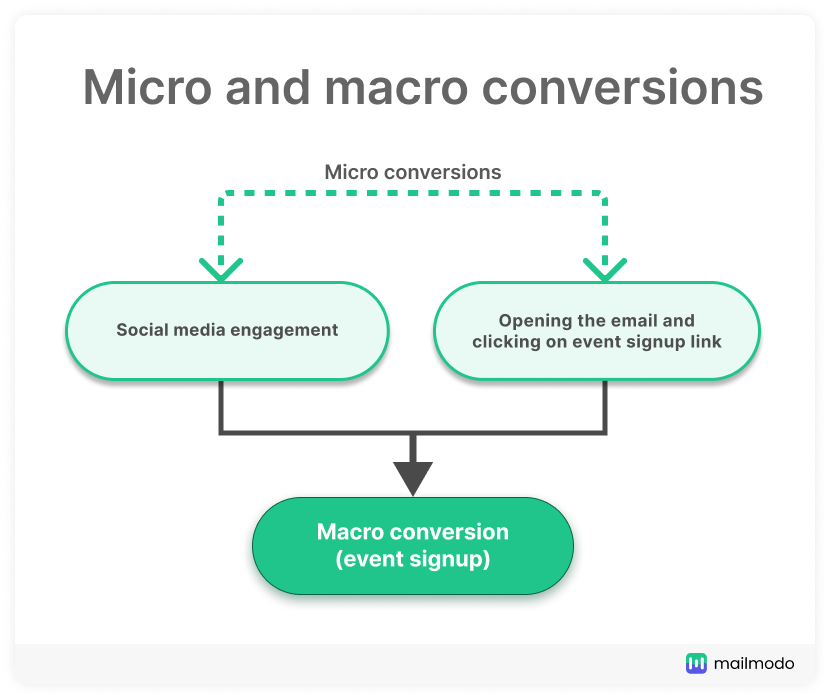
FIGURE 5‑33: MICRO AND MACRO CONVERSIONS IN SOCIAL MEDIA MARKETING
In summary, micro conversions represent smaller, engagement-oriented actions that signal interest and interaction with the brand, while macro conversions denote more significant actions that directly contribute to achieving the brand’s business objectives, such as sales or lead generation. Both micro and macro conversions are essential metrics in social media marketing, providing insights into user behavior and campaign effectiveness at different stages of the customer journey.
Role of Social Media Messaging Apps in Modern Marketing Strategies
The Social Media Messaging Apps Market
The Social Media Messaging Apps market is a dynamic and rapidly evolving sector within the broader realm of social media and communication technology. These apps have transformed the way people communicate, offering instant messaging, voice and video calling, as well as a plethora of additional features ranging from photo and video sharing to gaming and commerce integrations. Here are some key points to consider:
Market Growth: The market for social media messaging apps has experienced exponential growth in recent years, driven by the increasing adoption of smartphones, advancements in mobile internet infrastructure, and the growing demand for real-time communication.
Dominant Players: Several major players dominate the market, including WhatsApp, Facebook Messenger, WeChat, Instagram Direct, Snapchat, and Telegram. Each of these platforms has its unique features, user base, and geographic presence.
Global Reach: Social media messaging apps have a global reach, with users spanning across continents. While some apps have a more prominent presence in certain regions (e.g., WeChat in China, Line in Japan), others like WhatsApp and Facebook Messenger have a more universal appeal.
Monetization Strategies: Monetization strategies vary among messaging apps. Some apps rely on advertising, while others offer premium features or subscription models. Additionally, many messaging apps are integrating e-commerce functionalities, allowing users to shop, pay bills, and transact within the app.
Privacy and Security Concerns: The increasing prevalence of data breaches, privacy scandals, and concerns over user data collection have raised questions about the privacy and security of messaging apps. This has led to heightened scrutiny from regulators and increased demand for apps that prioritize user privacy and data protection.
Innovations and Features: To stay competitive, messaging apps continually innovate and introduce new features to enhance user experience. These may include augmented reality filters, stickers, disappearing messages, group video calls, and integration with other services such as payment platforms and third-party apps.
Integration with Social Media Platforms: Many messaging apps are owned by larger social media companies (e.g., WhatsApp and Facebook Messenger by Meta Platforms, Instagram Direct by Facebook). Integration with these platforms allows for seamless cross-platform communication and sharing of content.
Emerging Trends: Emerging trends in the social media messaging apps market include the rise of ephemeral messaging (messages that disappear after a set time), the integration of AI and chatbots for customer service and personalization, and the increasing focus on mental health and digital well-being features.
Overall, the social media messaging apps market continues to evolve rapidly, driven by technological advancements, changing consumer behaviors, and regulatory developments. As users seek more convenient, secure, and personalized communication experiences, messaging apps will continue to play a central role in the digital landscape.
Popular Mobile Messenger Apps
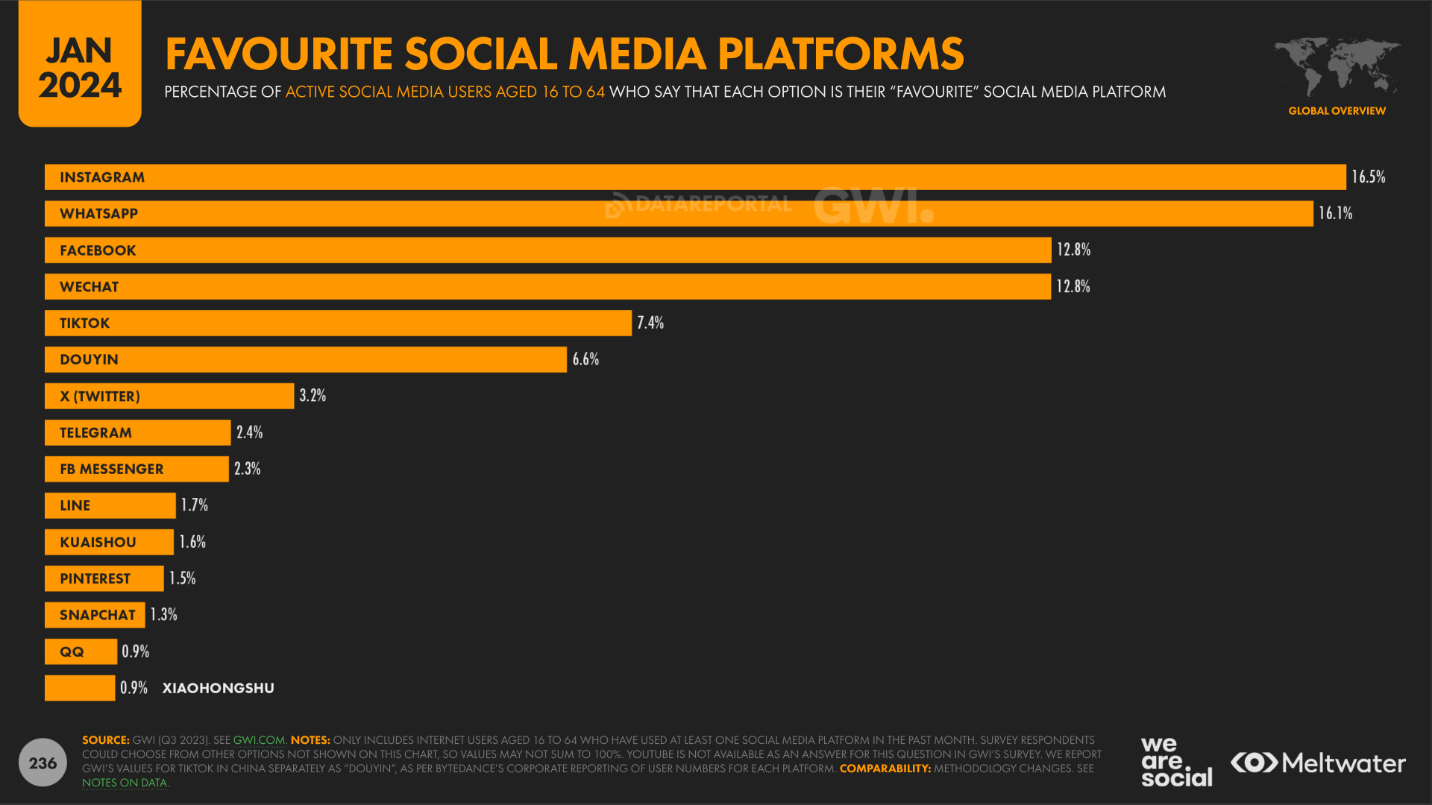
FIGURE 5‑34: FAVORITE SOCIAL MEDIA PLATFORMS. (IMAGE SOURCE: DATAREPORTAL)
The latest 2024 Digital Growth report, a collaborative effort by we are social, Meltwater, and Datareportal, highlights the overwhelming popularity of messaging apps such as WhatsApp, WeChat, Facebook Messenger, and Telegram. Together, these platforms boast a staggering total of around five billion active monthly users, solidifying their dominance in the global social media landscape.
While Meta, now encompassing a “Family of apps,” consolidates its user data, WhatsApp stands out with its last officially reported user count of over two billion in 2020. This places the green-themed messaging giant leagues ahead of competitors like Facebook Messenger, WeChat, Viber, Apple Messages, and Telegram in terms of user numbers.
Mark Zuckerberg, the CEO of Meta, disclosed that WhatsApp is handling approximately 100 billion messages daily, underlining its significance not just in private communications but also in business interactions. In June 2023, WhatsApp Business achieved a milestone of 200 million monthly active users, as reported by TechCrunch, citing an analyst at AllianceBernstein.
Among messenger apps, WhatsApp maintains its top position as the leading OTT messaging app, followed closely by the Chinese powerhouse WeChat boasting 1.3 billion users, and Messenger by Meta.
Furthermore, WhatsApp emerges as the most engaging social media app, with Android users accessing it over 900 times per month on average. In contrast, Instagram sees about 350 monthly openings, while YouTube lags behind with around 200.
The growth trajectory of Instagram is noteworthy, surging from 1.1 billion users in October 2020 to an impressive two billion users by the start of 2024. Meanwhile, Telegram, despite being a relatively smaller player in the messenger landscape, exhibits remarkable growth, increasing its active user base from 550 million in 2020 to 800 million by 2023.
Using Social Media Apps For Marketing
Using social media apps for marketing can be highly effective in reaching and engaging with your target audience. Here’s a step-by-step guide on how to leverage social media platforms for marketing purposes:
FIGURE 5‑35: WHATSAPP ADVERTISING MESSAGE SAMPLE
Set Clear Goals: Define your marketing objectives. Whether it’s increasing brand awareness, driving website traffic, generating leads, or boosting sales, having clear goals will guide your social media strategy.
Know Your Audience: Understand your target audience’s demographics, interests, behaviors, and preferences. This information will help you tailor your content and messaging to resonate with your audience.
Choose the Right Platforms: Select social media platforms that align with your target audience and business objectives. Consider platforms like Facebook, Instagram, Twitter, LinkedIn, Pinterest, TikTok, and Snapchat based on where your audience is most active.
Create Compelling Content: Develop high-quality, relevant, and engaging content that provides value to your audience. This could include informative articles, visually appealing images and videos, polls, quizzes, user-generated content, and behind-the-scenes glimpses of your brand.
Optimize Profiles: Optimize your social media profiles with branded visuals, a compelling bio, relevant keywords, and a link to your website or landing page. Consistency in branding across all platforms helps reinforce brand identity.
Engage with Your Audience: Actively engage with your audience by responding to comments, messages, and mentions promptly. Encourage conversations, ask questions, and foster a sense of community around your brand.
Utilize Paid Advertising: Take advantage of paid advertising options offered by social media platforms to reach a wider audience and drive specific actions such as website clicks, app installs, or lead generation. Target your ads based on demographics, interests, behaviors, and custom audiences for better ROI.
Monitor and Analyze Performance: Regularly monitor the performance of your social media efforts using analytics tools provided by the platforms or third-party software. Track metrics such as reach, engagement, clicks, conversions, and ROI to evaluate the effectiveness of your campaigns and make data-driven decisions.
Adjust and Iterate: Based on your performance metrics, refine your social media strategy by identifying what works well and what doesn’t. Experiment with different content formats, posting times, and messaging to optimize your results over time.
Stay Up-to-Date with Trends: Keep abreast of the latest trends, features, and algorithm changes on social media platforms. Adapt your strategy accordingly to stay relevant and maximize your reach and engagement.
By following these steps and consistently refining your approach, you can effectively use social media apps as powerful marketing tools to grow your brand, connect with your audience, and drive business results.
What Is Social Entertainment
Social entertainment refers to the fusion of social interaction and entertainment within digital platforms or social media environments. It involves the use of technology to facilitate shared experiences, collaboration, and interaction among users while consuming entertainment content. Social entertainment platforms often integrate features that enable users to engage with each other, share content, participate in activities, and build communities around common interests.
Key characteristics of social entertainment include:
Interactive Content: Social entertainment platforms offer interactive content that encourages user participation and engagement. This can include live streaming, interactive games, virtual events, quizzes, polls, challenges, and collaborative storytelling.
User-generated Content (UGC): Users play a central role in social entertainment by creating and sharing their own content, such as videos, photos, memes, and reviews. UGC fosters a sense of community and allows users to express themselves creatively.
Community Building: Social entertainment platforms facilitate the formation of communities based on shared interests, hobbies, fandoms, or identities. Users can connect with like-minded individuals, join groups, follow influencers, and participate in discussions and forums.
Real-time Interaction: Social entertainment often involves real-time communication and interaction among users. This can include live chat, comments, reactions, virtual gifting, and multiplayer gaming, enhancing the sense of connection and immediacy.
Cross-platform Integration: Many social entertainment platforms integrate with other social media networks, allowing users to share content seamlessly across multiple platforms and reach a broader audience.
Examples of social entertainment platforms include:
Twitch: A live streaming platform primarily focused on gaming, where users can watch live broadcasts, interact with streamers through chat, and participate in gaming communities.
FIGURE 5‑36: A LIVE STREAMING PLATFORM
YouTube: While primarily a video-sharing platform, YouTube also fosters social interaction through comments, likes, shares, and live streaming.
TikTok: A short-form video app where users create and share lip-sync, dance, comedy, and other types of videos. TikTok emphasizes user engagement through likes, comments, duets, and challenges.
Roblox: A gaming platform and game creation system that allows users to design and play games created by other users. Roblox encourages social interaction and collaboration among players within virtual worlds.
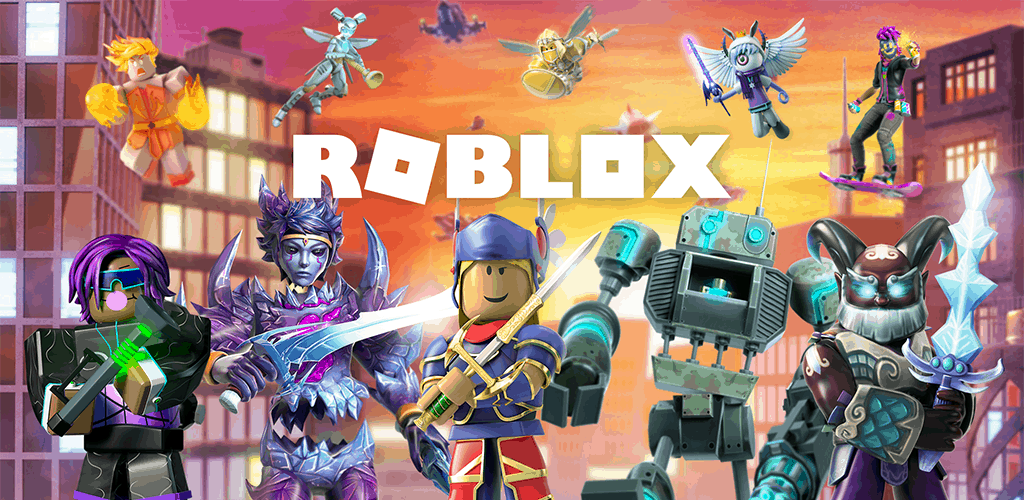
FIGURE 5‑37: ROBLOX GAMMING PLATFORM
Discord: A communication platform popular among gamers, where users can chat via text, voice, and video, join servers based on specific interests, and participate in communities.
Overall, social entertainment offers immersive and interactive experiences that blur the lines between content consumption and social interaction, enabling users to connect, create, and share in meaningful ways.
Social Entertainment in Social Media Marketing
Social entertainment plays a pivotal role in the landscape of social media marketing, acting as both a catalyst and a cornerstone for engaging audiences. Here’s a breakdown of its significance:
Engagement Amplification: Social entertainment, through various forms such as interactive quizzes, polls, challenges, or live streaming, enhances user engagement. By offering entertaining content, brands can captivate their audience’s attention and encourage participation, leading to increased interaction and extended time spent on platforms.
Brand Visibility and Recognition: Leveraging social entertainment helps brands stand out amidst the noise of traditional marketing tactics. Creative and entertaining content attracts attention, making it more likely for users to remember and recognize the brand. This increased visibility can lead to higher brand recall and improved brand perception.
Audience Connection and Community Building: Social entertainment fosters a sense of community and belonging among followers. When brands create entertaining content that resonates with their audience’s interests and values, it strengthens the emotional connection between the brand and its followers. This connection encourages loyalty and advocacy, as users feel personally invested in the brand’s narrative.
Virality and Reach Expansion: Entertaining content has a higher propensity to go viral on social media platforms. Whether it’s a funny video, a catchy meme, or a relatable story, content that evokes emotions is more likely to be shared among users, thus extending its reach exponentially. This virality amplifies brand exposure and attracts new followers and potential customers.
Data Insights and Consumer Behavior Analysis: Social entertainment campaigns provide valuable insights into consumer behavior and preferences. Through user interactions and engagement metrics, brands can gather data on audience demographics, interests, and sentiment. This data informs future marketing strategies, allowing brands to tailor their content and messaging for maximum impact.
Adaptability and Innovation: The dynamic nature of social entertainment encourages brands to stay agile and innovative in their marketing approaches. By experimenting with new formats, trends, and platforms, brands can stay ahead of the curve and remain relevant in the ever-evolving social media landscape.
In essence, social entertainment serves as a powerful tool for brands to connect, engage, and resonate with their audience in the crowded digital sphere of social media marketing. By infusing creativity, authenticity, and entertainment into their campaigns, brands can forge meaningful relationships with their followers and drive tangible business results.
Examples Of Brands Using Social Entertainment
Here are some real examples of brands using social entertainment in their social media marketing efforts:
LEGO’s “Build with Chrome”: LEGO partnered with Google to create an interactive online platform where users could build virtual LEGO structures on Google Maps. This campaign combined the fun of LEGO building with the interactivity of social media, allowing users to share their creations with friends and communities.
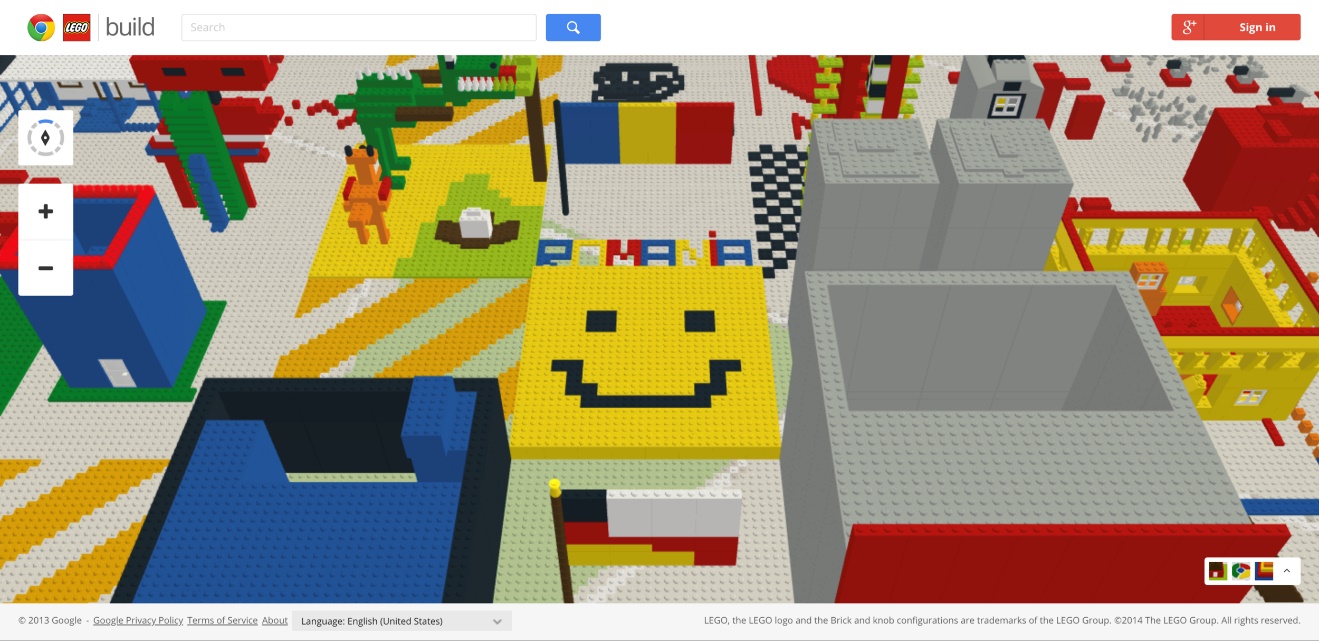
FIGURE 5‑38: LEGO’S “BUILD WITH CHROME” CAMPAIGN
Red Bull’s Stratos Jump Live Stream: Red Bull’s live stream of Felix Baumgartner’s record-breaking skydive from the stratosphere captivated millions of viewers worldwide. The event not only showcased Red Bull’s association with extreme sports but also engaged audiences through real-time interaction and commentary on social media platforms.

FIGURE 5‑39: DORITOS’ “CRASH THE SUPER BOWL” CAMPAIGN (IMAGE SOURCE: HTTPS://MARTECH.ORG/)
Doritos’ “Crash the Super Bowl” Campaign: Doritos invited consumers to create and submit their own commercials for the chance to have them aired during the Super Bowl. This user-generated content campaign not only generated buzz and excitement leading up to the big game but also engaged Doritos’ audience in a creative and interactive way.
Oreo’s Daily Twist Campaign: To celebrate its 100th anniversary, Oreo launched the “Daily Twist” campaign, creating 100 different images featuring the iconic cookie in various situations, tied to current events and pop culture moments. Each image was shared on social media, sparking conversation and engagement among Oreo’s fans.
FIGURE 5‑40: OREO’S DAILY TWIST CAMPAIGN
Burberry’s Snapchat Fashion Show: Burberry became the first luxury brand to live stream its fashion show on Snapchat, offering exclusive behind-the-scenes content and sneak peeks of its latest collection. By leveraging the ephemeral nature of Snapchat, Burberry created a sense of exclusivity and urgency, driving engagement among its followers.
Starbucks’ “White Cup Contest”: Starbucks launched a social media contest encouraging customers to decorate their iconic white cups and share photos of their designs on social media using the hashtag #WhiteCupContest. The campaign not only sparked creativity and engagement among Starbucks’ customers but also generated user-generated content that showcased the brand’s products in a unique way.
These examples demonstrate how brands leverage social entertainment to engage their audience, foster creativity, and generate buzz on social media platforms.
Online Brand Community and Social Media Marketing
An online brand community is a digital space where individuals with shared interests, values, or experiences gather to engage with a particular brand. These communities serve as platforms for customers, fans, and followers to connect with each other and with the brand itself, fostering relationships, discussions, and collaboration around the brand’s products, services, or values.
Key features of online brand communities include:
Shared Identity: Members of online brand communities typically share a common interest or affiliation with the brand, whether it’s a product they use, a lifestyle they embrace, or a cause they support. This shared identity forms the basis of community membership.
Engagement and Interaction: Online brand communities facilitate various forms of engagement and interaction among members, such as discussions, forums, polls, reviews, and user-generated content. Members can ask questions, share experiences, offer advice, and collaborate on projects related to the brand.
Support and Advocacy: Brand communities often serve as platforms for members to seek support, assistance, or advice from fellow users or brand representatives. Members may also advocate for the brand, sharing positive experiences, testimonials, and recommendations with others.
Access to Exclusive Content and Benefits: Brands may offer members of their online communities access to exclusive content, discounts, promotions, or events as a way to incentivize participation and reward loyalty.
Feedback and Co-creation: Online brand communities provide brands with valuable insights and feedback from their most engaged customers. Brands can solicit input on new products, features, or initiatives, and involve community members in co-creation activities to ensure that offerings align with customer preferences and needs.
Sense of Belonging and Community: Participation in an online brand community can foster a sense of belonging and community among members, who may develop relationships, friendships, and connections with one another based on their shared experiences and interests.
Examples of online brand communities include:
Nike’s “NikePlus” community for athletes and fitness enthusiasts, offering access to exclusive products, events, and training resources.
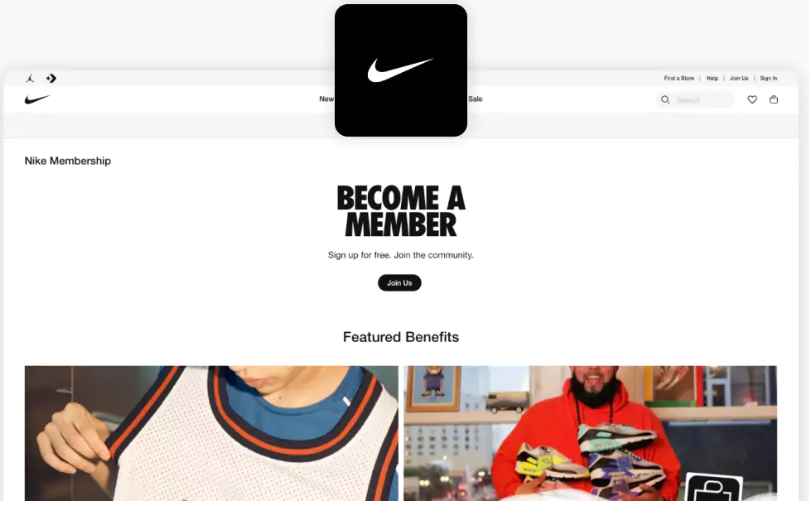
FIGURE 5‑41: NIKE’S “NIKEPLUS” COMMUNITY FOR ATHLETES AND FITNESS ENTHUSIASTS
Sephora’s “Beauty Insider Community,” where makeup enthusiasts share tips, reviews, and tutorials, and earn rewards for participation.
Harley-Davidson’s “H.O.G. (Harley Owners Group)” community for motorcycle enthusiasts, providing access to events, rides, and a network of fellow riders.
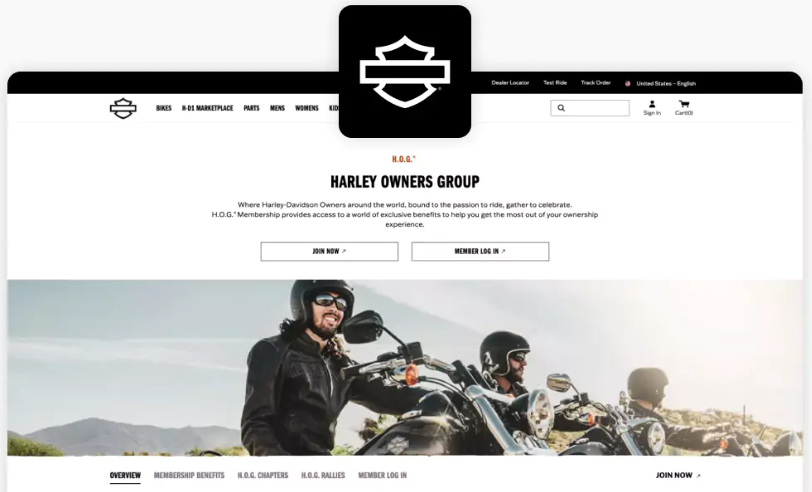
FIGURE 5‑42: HARLEY-DAVIDSON’S “H.O.G. (HARLEY OWNERS GROUP)” COMMUNITY
Overall, online brand communities play a crucial role in fostering customer engagement, loyalty, and advocacy by providing a platform for meaningful interactions and connections between brands and their customers.
Role Of Online Brand Communities In Social Media Marketing
Online brand communities play a significant role in social media marketing by serving as powerful platforms for brand engagement, customer interaction, and community building. Here’s how online brand communities intersect with social media marketing:
Enhanced Brand Visibility: By establishing and nurturing an online brand community on social media platforms, brands can increase their visibility and reach a wider audience. Community members share content, engage with posts, and spread the word about the brand, amplifying its presence across social networks.
Customer Engagement and Relationship Building: Online brand communities provide a space for brands to engage directly with their customers in meaningful conversations. Through social media platforms, brands can interact with community members, respond to inquiries, address concerns, and foster genuine relationships that build trust and loyalty over time.
User-generated Content (UGC) and Advocacy: Social media platforms within online brand communities are fertile ground for user-generated content (UGC). Members share photos, videos, reviews, and testimonials about their experiences with the brand, serving as authentic advocates and influencers to their social networks.
Feedback and Product Development: Brands can leverage online brand communities on social media to gather valuable feedback from their most engaged customers. By listening to community discussions, conducting polls, and soliciting input, brands can gain insights into customer preferences, pain points, and ideas for product development or improvement.
Exclusive Offers and Promotions: Social media platforms within online brand communities are ideal for sharing exclusive offers, promotions, and sneak peeks of new products or services. Brands can reward community members for their loyalty with special discounts, early access, or VIP experiences, fostering a sense of exclusivity and appreciation.
Brand Advocacy and Word-of-Mouth Marketing: Engaged members of online brand communities often become brand advocates who actively promote the brand to their social networks. Through social media, brand advocates share their positive experiences, recommendations, and referrals, driving word-of-mouth marketing and organic brand awareness.
Community-driven Marketing Campaigns: Brands can harness the power of their online brand communities to co-create marketing campaigns and initiatives. By involving community members in contests, challenges, or user-generated content campaigns, brands can tap into their creativity, enthusiasm, and influence to amplify campaign reach and effectiveness.
In essence, online brand communities within social media platforms serve as invaluable assets for brands looking to build strong relationships with their customers, drive brand advocacy, and create authentic connections in today’s digital landscape. By prioritizing community engagement, listening to customer feedback, and fostering a sense of belonging, brands can leverage online brand communities to strengthen their social media marketing efforts and achieve long-term success.
Building Successful Online Brand Communities
Building successful online brand communities requires careful planning, engagement, and nurturing. Here are the steps to create and cultivate a thriving online brand community:
FIGURE 5‑43: BUILDING SUCCESSFUL ONLINE BRAND COMMUNITIES
Define Your Brand Identity and Values:
Clarify your brand’s identity, mission, values, and unique selling propositions. Your community should reflect and embody these elements, creating a sense of shared purpose and belonging among members.
Identify Your Target Audience:
Understand who your target audience is, including their demographics, interests, preferences, and pain points. This will help you tailor your community’s content, messaging, and engagement strategies to resonate with your audience effectively.
Choose the Right Platform:
Select the appropriate online platform or platforms for your community based on where your target audience is most active. This could include social media platforms like Facebook groups, LinkedIn groups, or specialized community forums.
Create a Welcoming Environment:
Establish clear guidelines, rules, and expectations for community members to ensure a positive and respectful environment. Encourage inclusivity, diversity, and constructive communication among members.
Provide Value-Driven Content:
Offer valuable and relevant content that educates, entertains, or inspires your community members. This could include informative articles, how-to guides, product tutorials, user-generated content, polls, quizzes, or exclusive offers.
Foster Engagement and Interaction:
Encourage active participation and interaction among community members through discussions, polls, Q&A sessions, contests, live streams, and events. Actively respond to comments, questions, and feedback to foster a sense of community and connection.
Empower Community Leaders:
Identify and empower passionate and influential members within your community to act as ambassadors, moderators, or advocates. Provide them with resources, support, and recognition to help them foster engagement and maintain a positive community culture.
Listen and Respond to Feedback:
Regularly solicit feedback from community members to understand their needs, preferences, and concerns. Actively listen to their feedback and address any issues or suggestions transparently and empathetically.
Promote User-Generated Content:
Encourage members to share their experiences, stories, and content related to your brand or industry. Highlight user-generated content, testimonials, and success stories to showcase the value and impact of your community.
Measure and Iterate:
Track key metrics and performance indicators, such as community growth, engagement levels, sentiment, and member satisfaction. Use this data to evaluate the effectiveness of your community-building efforts and make informed decisions to optimize and iterate your strategies over time.
By following these steps and continuously investing in community building, you can create a vibrant and loyal online brand community that fosters meaningful connections, drives brand advocacy, and contributes to the long-term success of your brand.
Distinction Between Search Engine Marketing (SEM) From Social Media Marketing (SMM)
SEM primarily encompasses paid search endeavors, commonly referred to as PPC (pay-per-click) campaigns. Some incorporate search engine optimization (SEO) strategies, like content marketing, as SEO revolves around search engines as well.
SMM can encompass both organic (unpaid) and paid social undertakings, encompassing promoted posts and social media advertisements.
While distinct in tactics, SEM and SMM share noteworthy parallels, including:
- Adaptability: Both provide avenues for paid and organic marketing (paid search ads + SEO in SEM, paid social ads + social media optimization in SMM).
- Outreach: They afford the opportunity to connect with a broad target audience (4.3 billion individuals use Google globally, while 3.6 billion engage with social media).
- Budget: While social media marketing can be executed without financial investment, attaining optimal results often necessitates a budget.
- Effectiveness: When executed skillfully, both avenues can yield substantial ROI.
However, essential differences between SMM and SEM are as follows:
- Personalization: SMM enables more direct audience engagement, fostering loyalty and trust.
- Expenditure: Social ads usually incur lower costs compared to paid search ads (though ROI hinges on strategy quality).
- Objectives: SMM is frequently focused on bolstering awareness, while paid search predominantly targets traffic and conversions.
Options: Varied audience segments exhibit distinct preferences for social media platforms, whereas most individuals rely on Google or Bing as their search engine (even though alternative options exist, naturally).
EndNotes
-
WeChat is a social media and messaging app that’s available internationally, but is primarily used in China, East Asia, and Southeast Asia. ↑
-
Tencent QQ (Chinese: 腾讯QQ), also known as QQ, is an instant messaging software service and web portal developed by the Chinese technology company Tencent. ↑
-
Douyin is a video-sharing platform in China that is similar to TikTok, but is only available in China. ↑
-
DataReportal is a website that offers thousands of free reports on online activity, including global overviews, local insights, and specialist reports on specific topics. ↑

